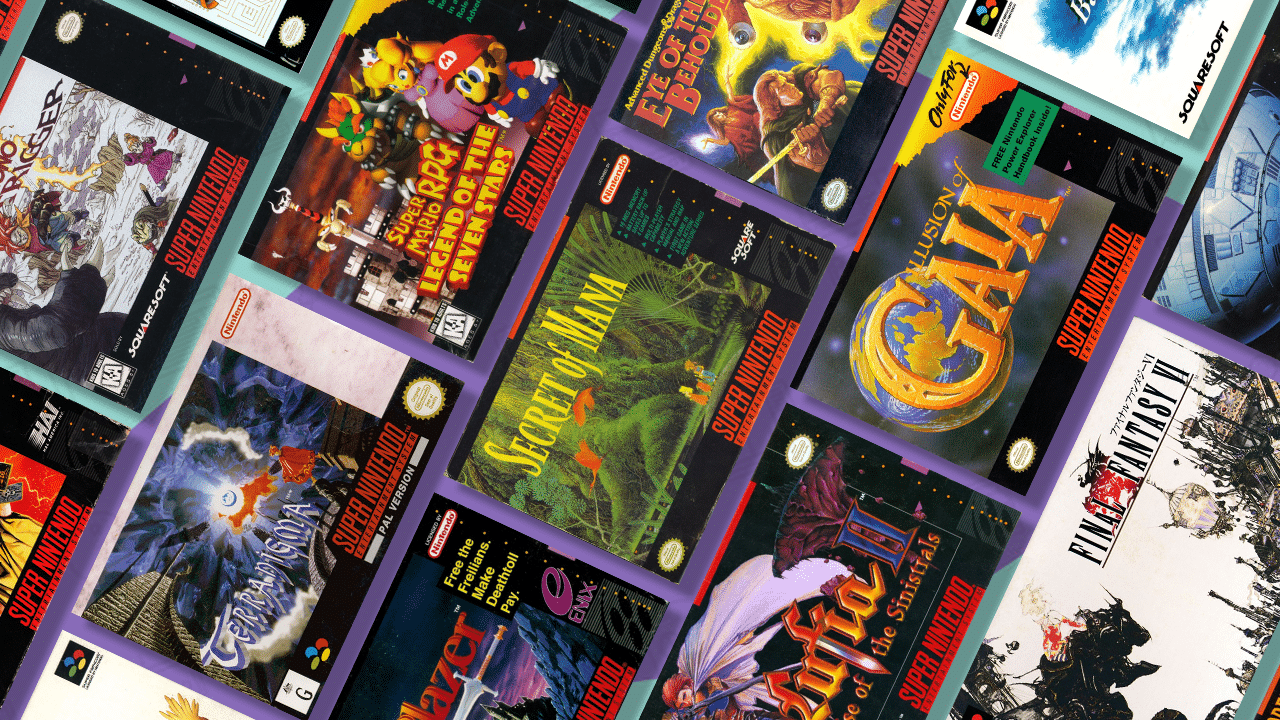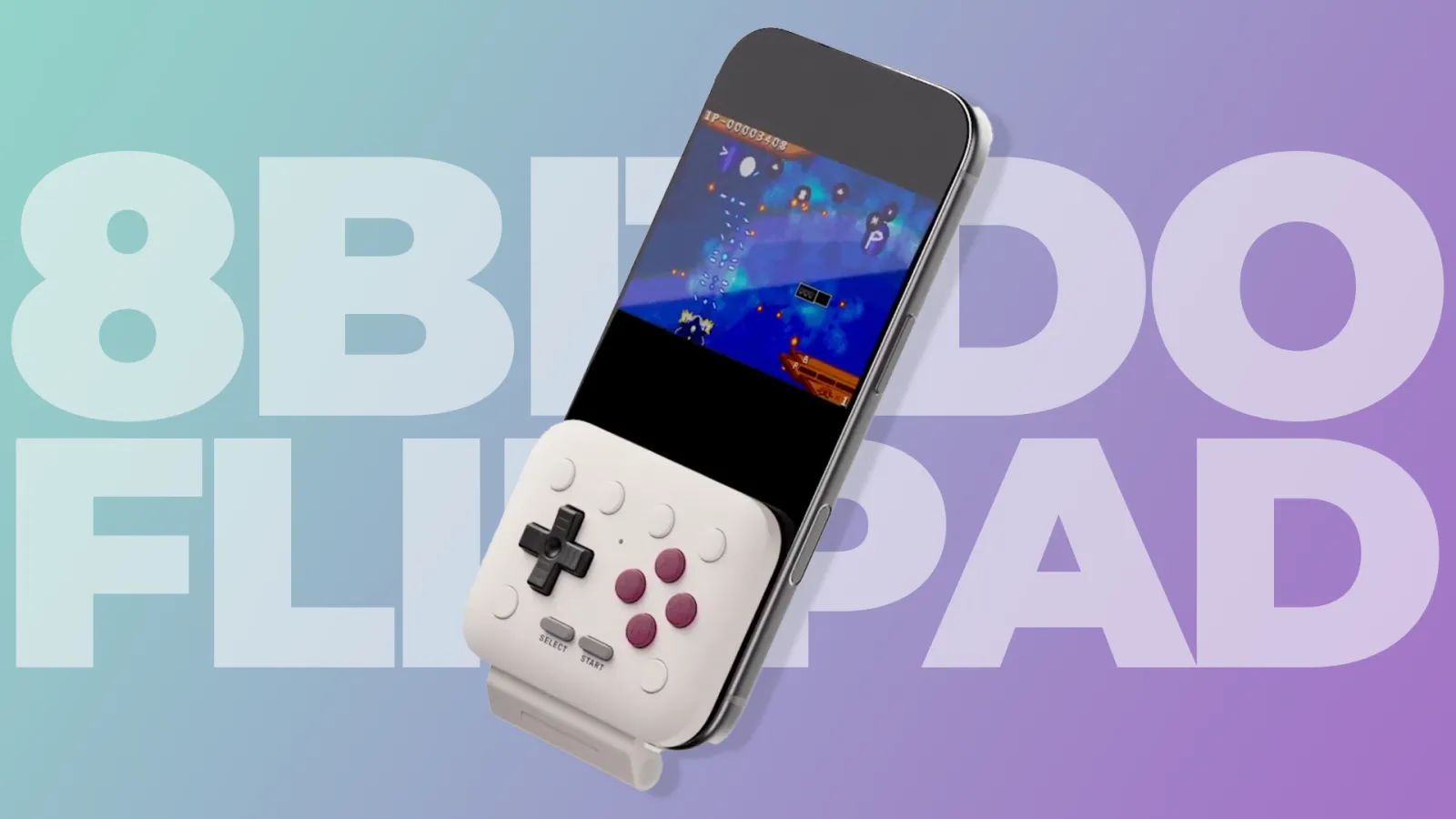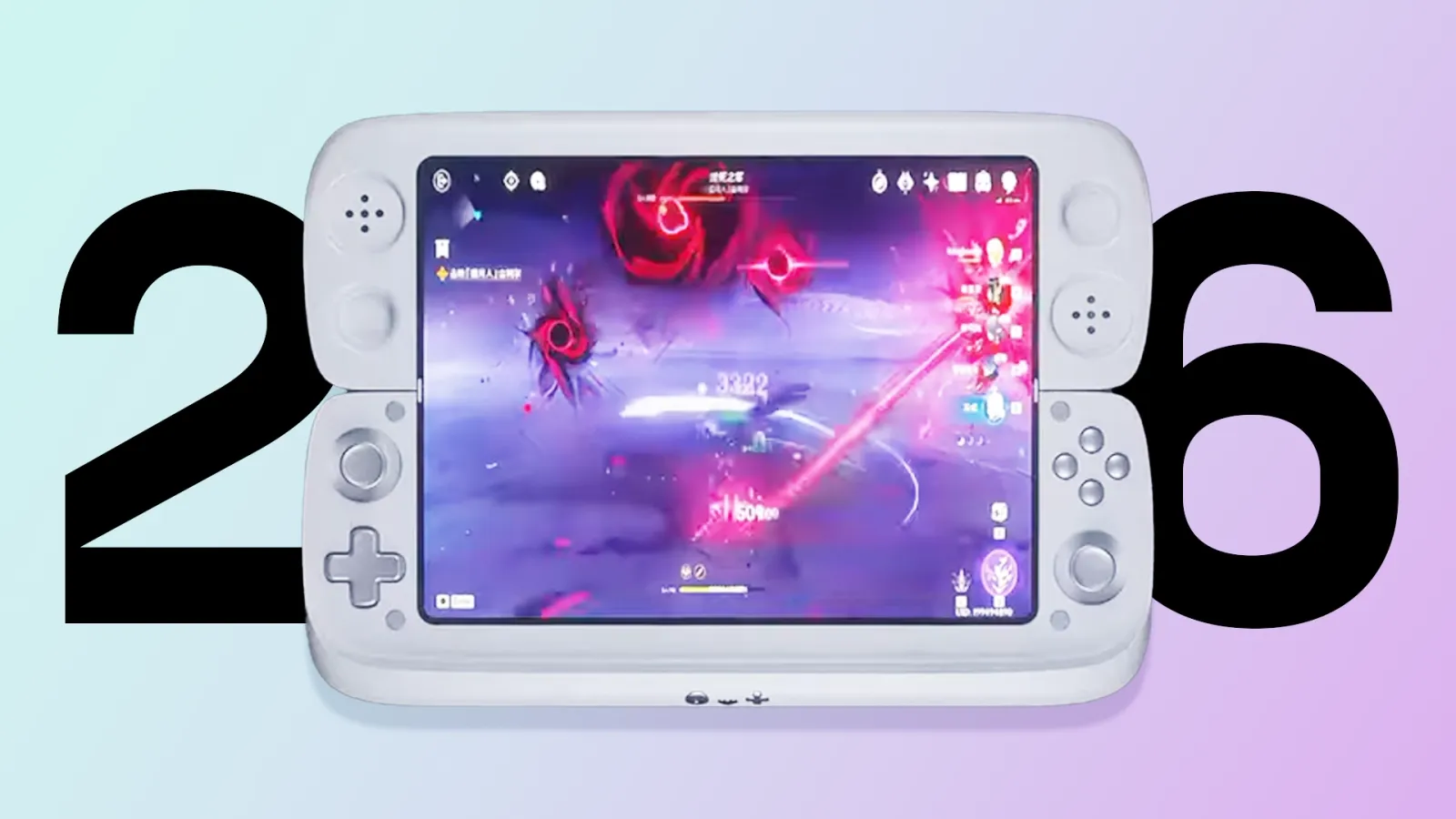The Best SNES RPGs list is one full of highly regarded classics, many of which still stand as fantastically playable examples of the genre even today, nearly 30 years on in some cases.
It helps, of course, that many indie studios today use 16-bit pixel art visuals and gameplay mechanics for role playing games, giving SNES games an almost timeless feel.
The SNES had some really interesting graphical capabilities, the most interesting – and widely used – of which was Mode 7, a feature that allowed for the manipulation of huge sprites (often used for maps, for example in The Legend of Zelda: A Link to the Past, or even entire stages, such as race tracks in Mario Kart or the game world itself in PilotWings).
These unique capabilities, as well as a tendency for developers to make use of custom chips within game cartridges (allowing for even more advanced features and mechanics) meant that the SNES often punched above its weight and role playing games found an ideal home on the console, which allowed for far greater scope and ambition in game design.
With Metacritic not being available during the SNES era and an astonishingly long list of classics to choose from, this list is potentially a bit less universally agreed upon than others on Retro Dodo.
Note also that I’ve deliberately omitted any title that was only released in Japan, though there may have subsequently been remakes or releases on other consoles that translated such titles.
1. Chrono Trigger (1995)
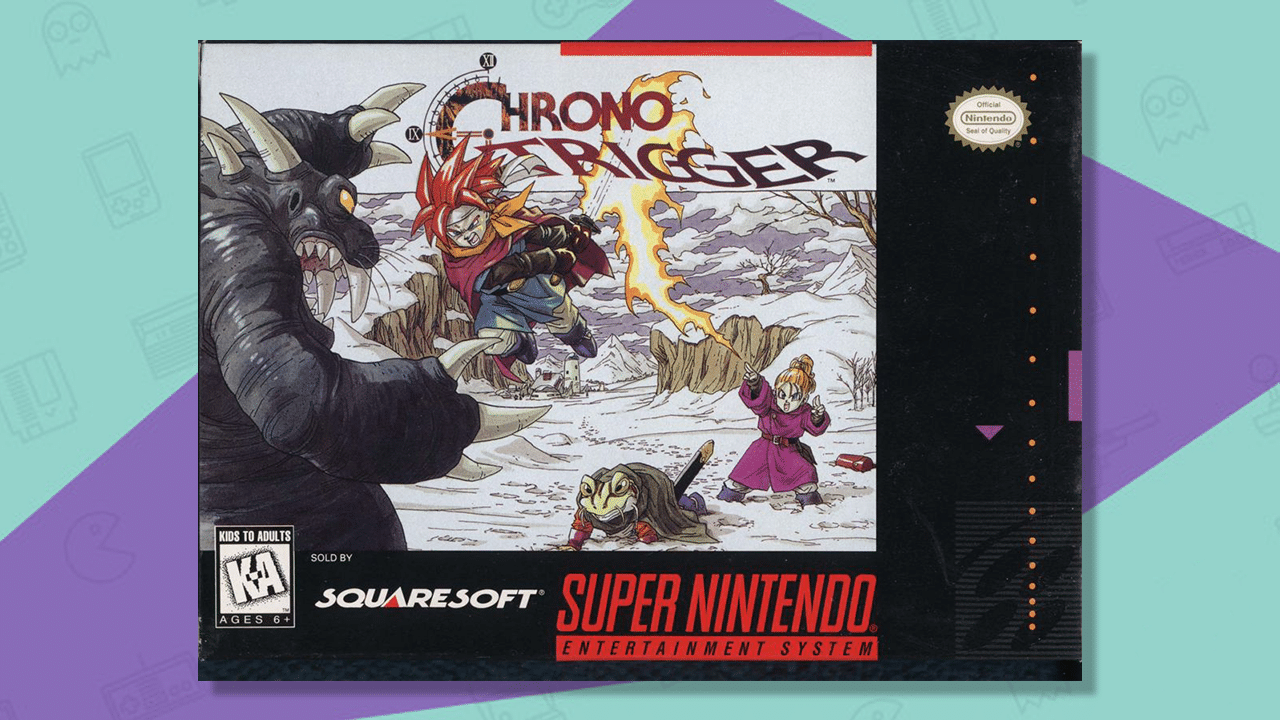
Square really were an unstoppable behemoth in the SNES era, churning out unbelievably grandiose epics one after another – and, just a year after their Final Fantasy series peaked with its final 16-bit entry, they raised the bar again with Chrono Trigger.
The traditional RPG gameplay of Chrono Trigger is enlivened by a time travel story, seeing players move between a number of different eras – taking them from prehistory to a post-apocalyptic future.

The removal of random encounters was a welcome addition to the otherwise traditional RPG formula, with turn-based battles forming the core of the combat, albeit with an Active Time Battle element – much like Square’s system in the Final Fantasy titles.
What sets Chrono Trigger apart and puts it at the very top of our list is its captivating, incredibly strong story and the typical Square polish that has cemented it not just as the finest SNES RPG, but one of the best games of all time, period.
2. Final Fantasy VI (1994)
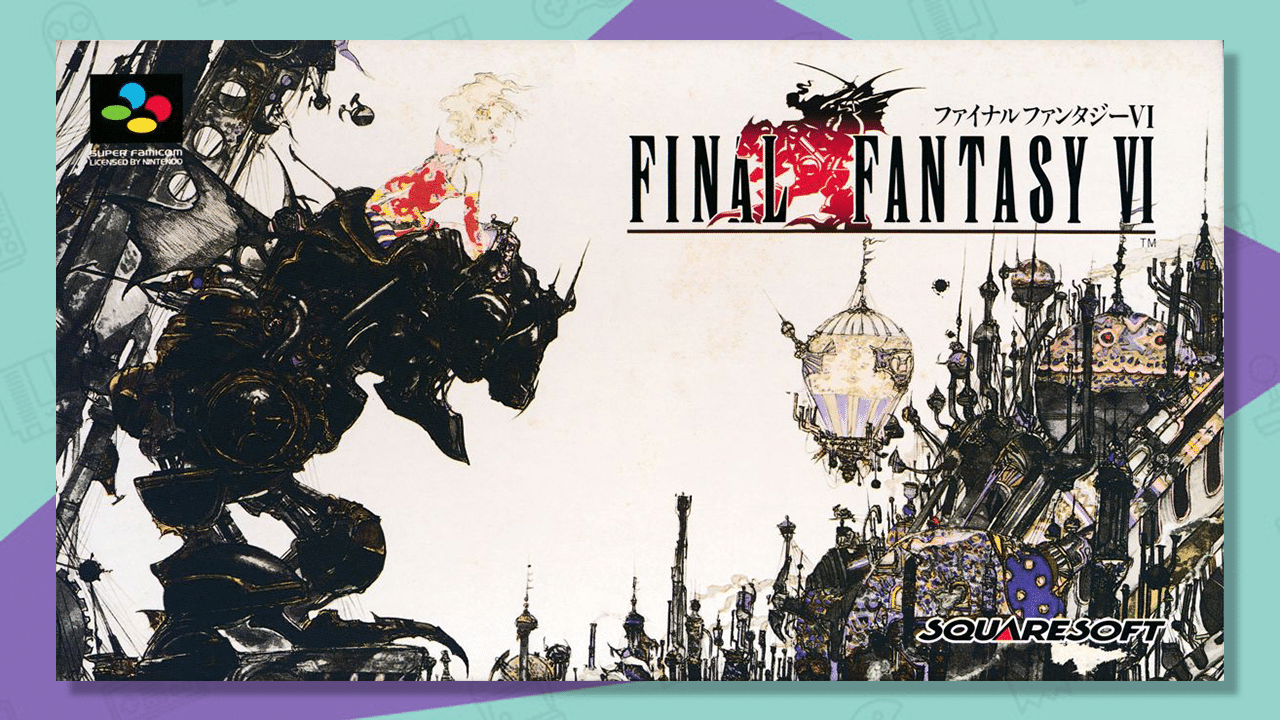
With Final Fantasy V not even seeing release outside of Japan (thus excluding it from this list), the sixth Final Fantasy game was actually numbered as Final Fantasy III in the US and, as with the other games in the series, it didn’t even make it to PAL regions (with the PlayStation’s Final Fantasy VII being the first game in the series to release in the EU).
This entry was another hugely ambitious game, especially in its day – and featured a more steampunk influenced setting than the more traditionally medieval style world in the previous games.
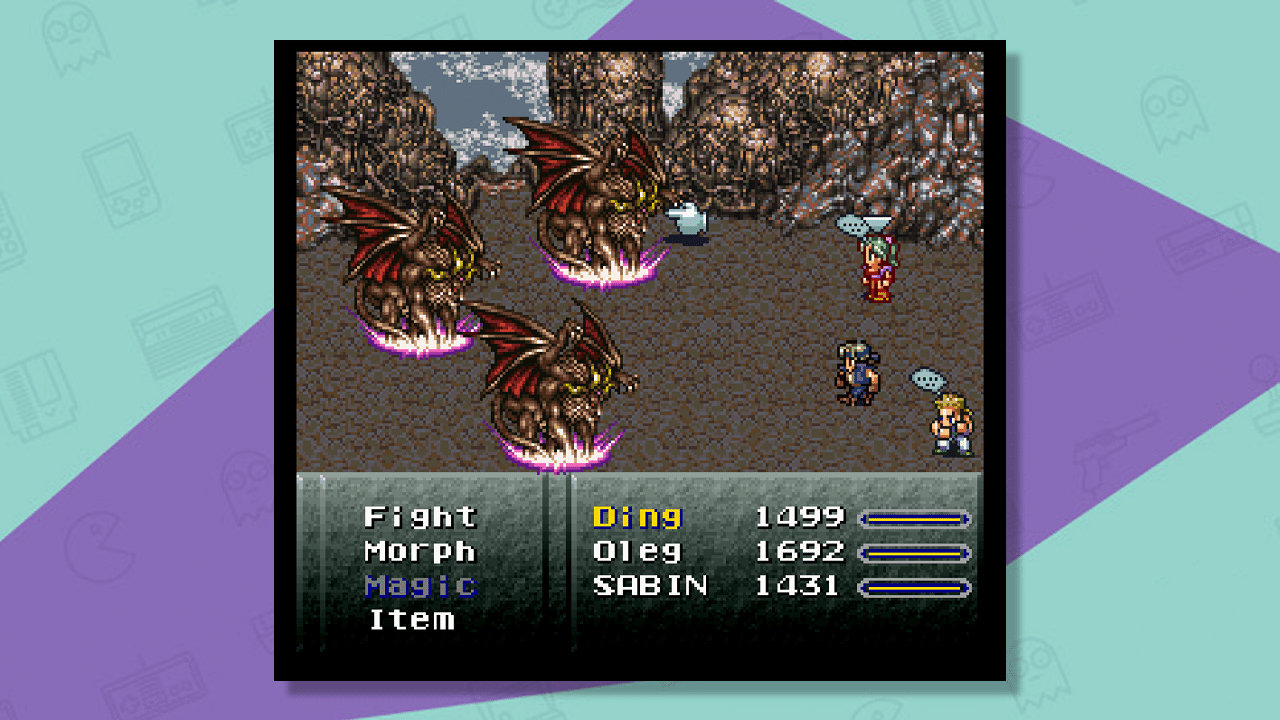
With a playable cast of fourteen (!) characters, Final Fantasy VI was an involving, brilliantly designed, enormous game that was a fitting swan song for the series on the SNES.
3. Super Mario RPG: Legend Of The Seven Stars (1996)

Despite the game’s pre-rendered look not aging as well as the pixel art styles of other games on this list, in its day Super Mario RPG’s visual style was seen as very advanced, at least for the then-aging SNES hardware – which had long been surpassed by other consoles (when Super Mario RPG released, the 32-bit era had been underway for nearly two years).
It’s not visuals that make or break a game however, and in this instance the Square/Nintendo collaboration that brought us Mario’s first ever RPG was an absolute joy to play and is one of the best SNES games of all time, heck one of the best Mario games of all time!
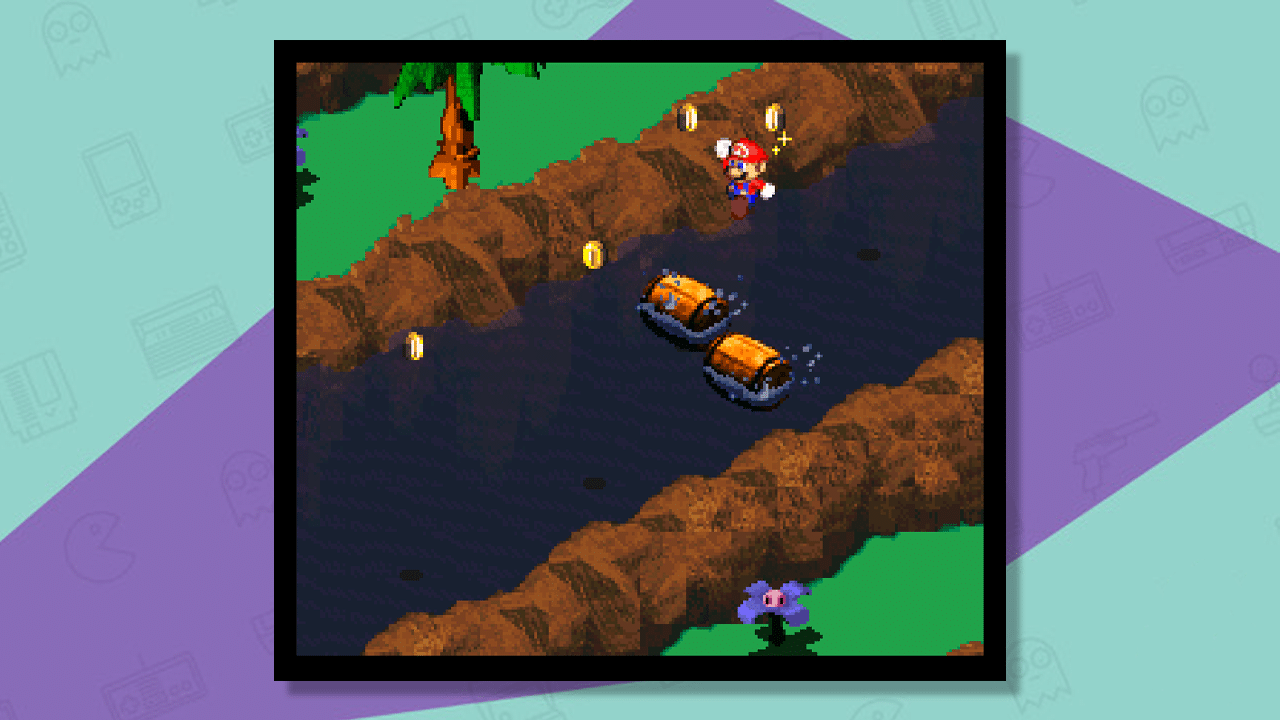
Featuring a great storyline, witty script and a number of mini games, Super Mario RPG: Legend of the Seven Stars was a hugely ambitious undertaking that had a bit of a tortured production process – but taking Mario away from his more traditional roots paid off beautifully.
If you’re interested, be sure to check out Theo’s review of the 2023 Nintendo Switch remake.
4. Secret Of Mana (1993)
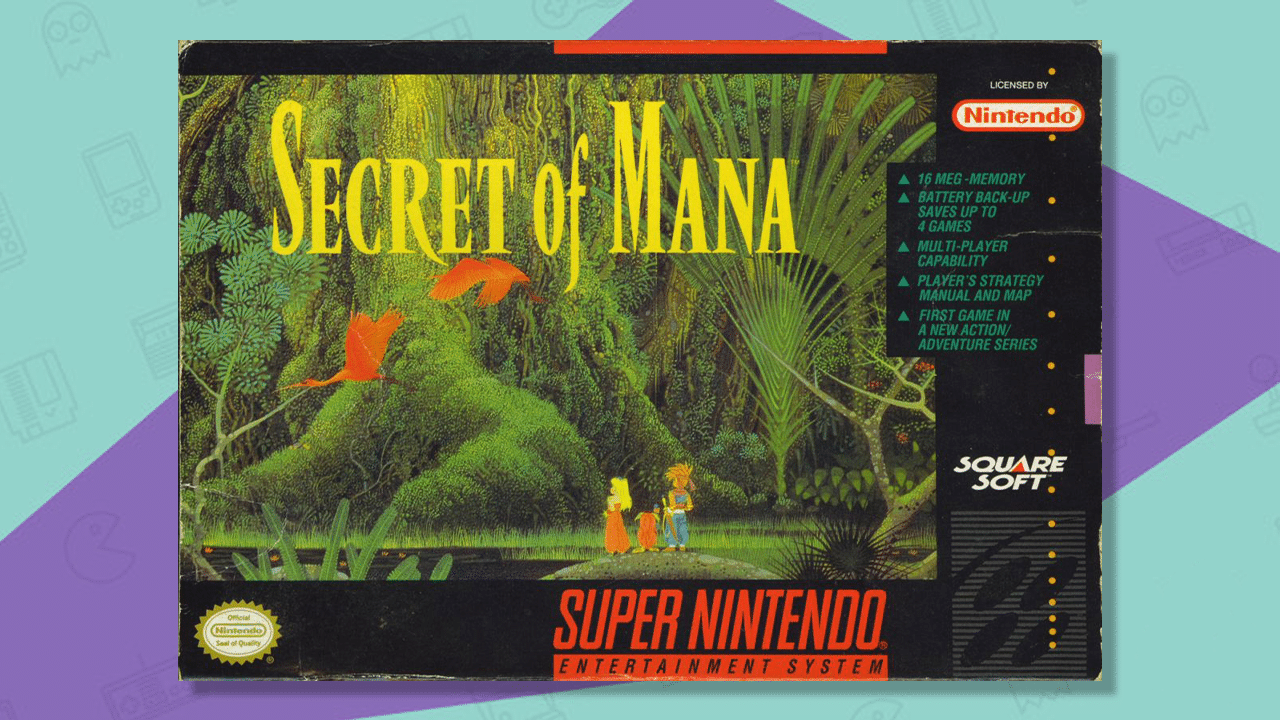
Though Square were known for turn-based battles in their RPGs, Secret of Mana bucked the trend and featured a real time, more action oriented approach – along with the ability for up to three players to play through the game co-operatively (at least once all three characters were introduced into the narrative, which could take some time!).

Though these elements marked the game out as unique in Square’s oeuvre, Secret of Mana still featured Square’s lavish production values, brilliant storytelling and beautiful art design – and it has absolutely stood the test of time.
5. Final Fantasy IV (1991)
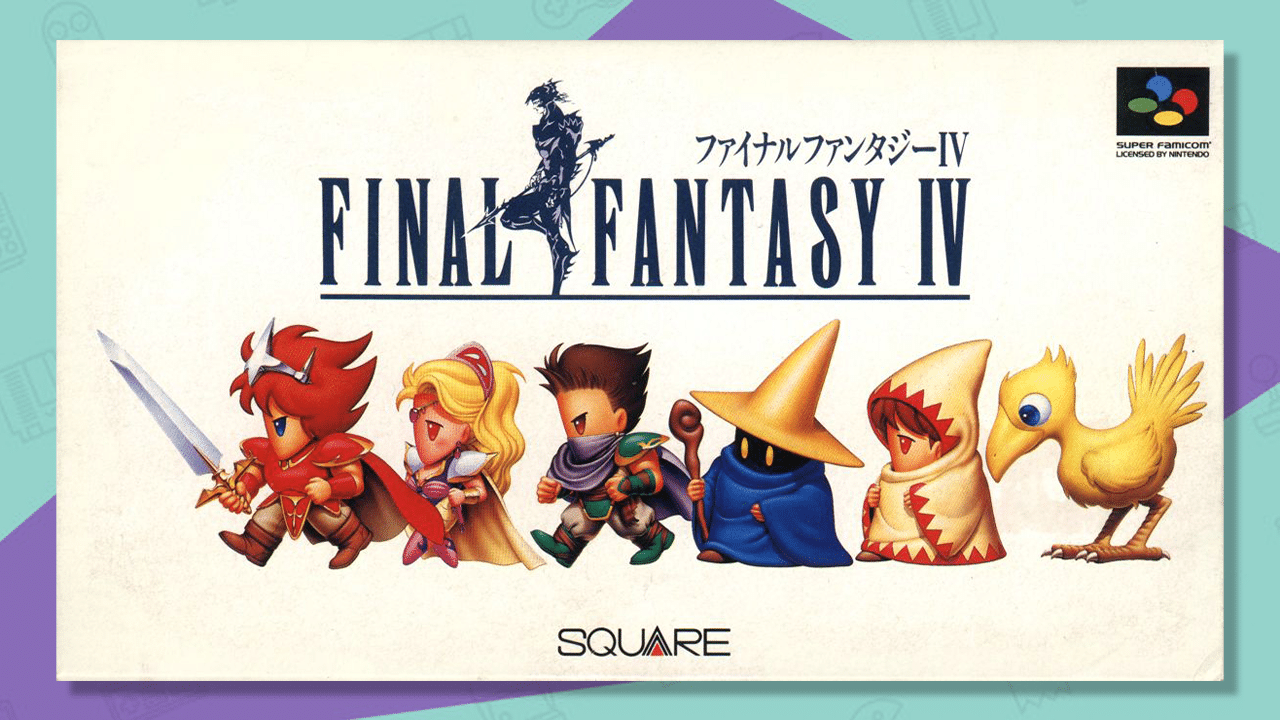
Developer/publisher Square were an absolute jewel in Nintendo’s crown for many years – the quality of their output setting a high bar that very few, if any, other companies could reach.
When Nintendo decided to stick with cartridge media for their N64 console – causing Square to eventually jump ship and shift the development of Final Fantasy VII to Sony’s PlayStation, it was a huge coup for Sony and a massive loss for Nintendo, one which took them years to recover from.
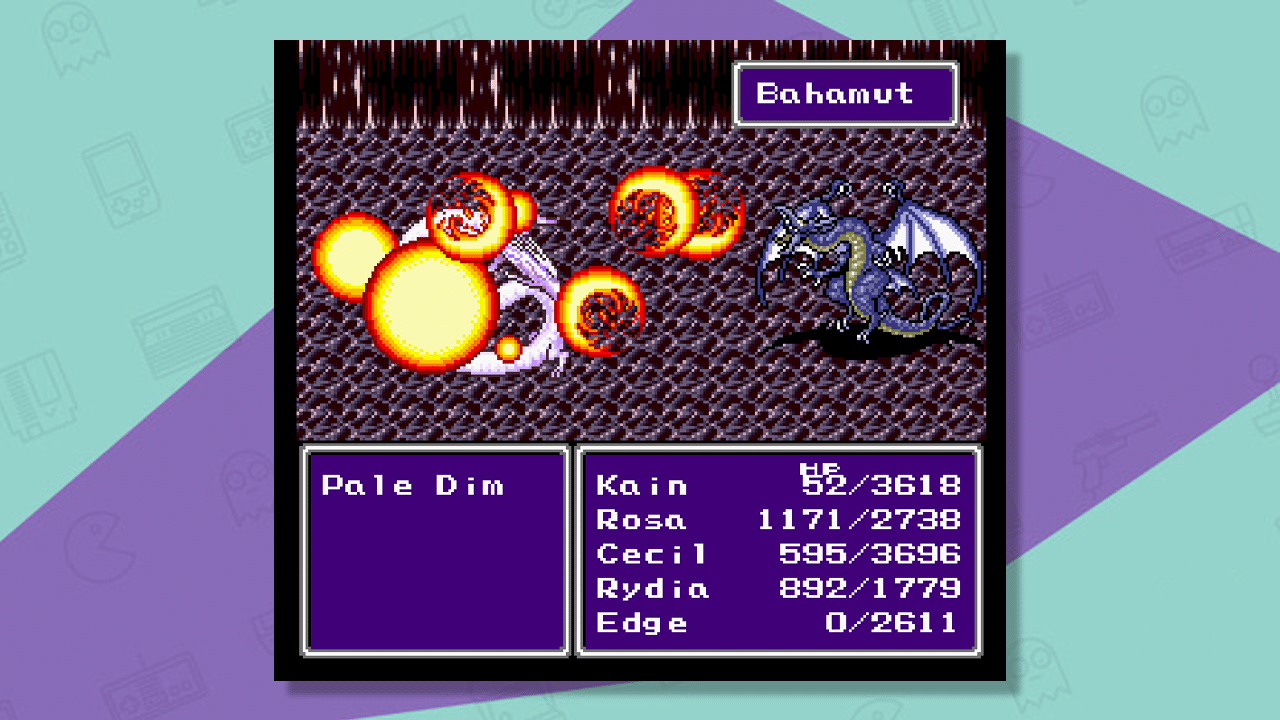
Case in point, starting with Final Fantasy IV (known as Final Fantasy II upon its original US release, thanks to the fact that not all of the Final Fantasy games made it to the West), every one of the top 5 games on this list were developed and/or published by Square.
Final Fantasy IV was another game in the series to be huge in size and scope – and was the first to feature the Active Time Battle system, which introduced a real time element to the turn-based battles.
6. Ogre Battle: The March Of The Black Queen (1993)
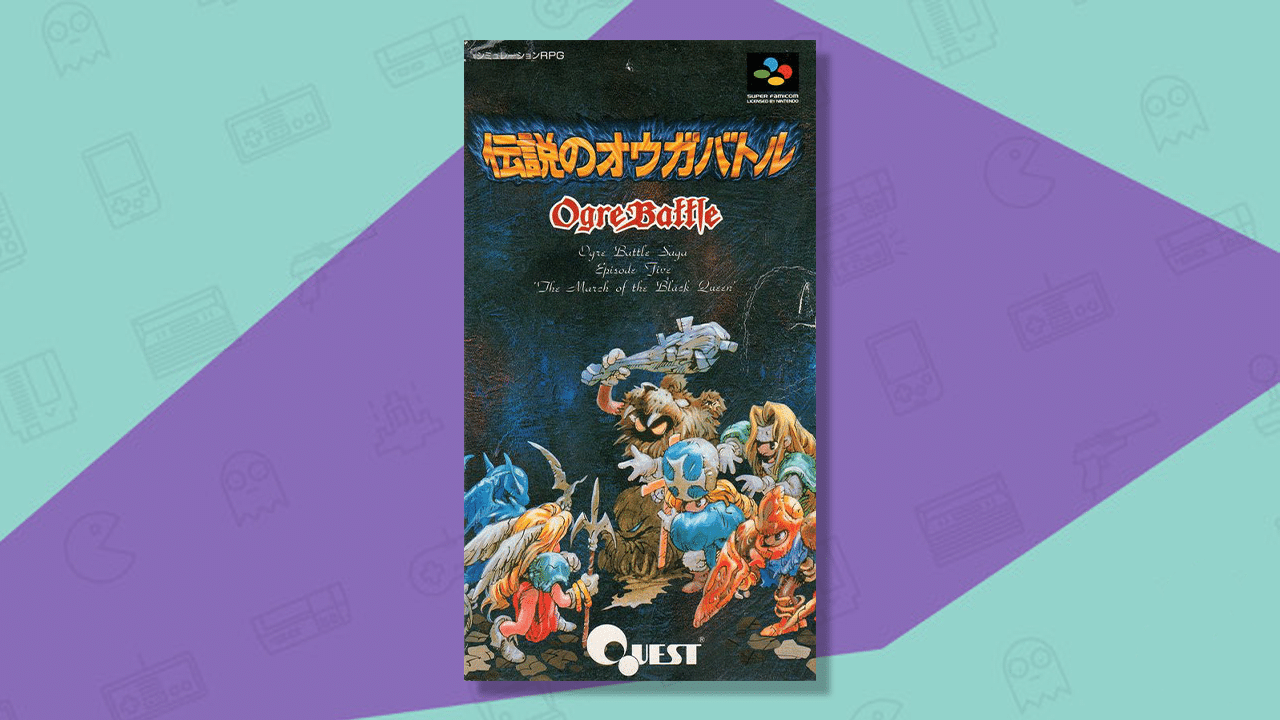
Another controversial entry, Ogre Battle: The March of the Black Queen is a much more tactically focused title than other RPGs on this list.
However, there’s no denying its quality; it’s a hugely addictive game with a strong battle element and superb production values for its time.
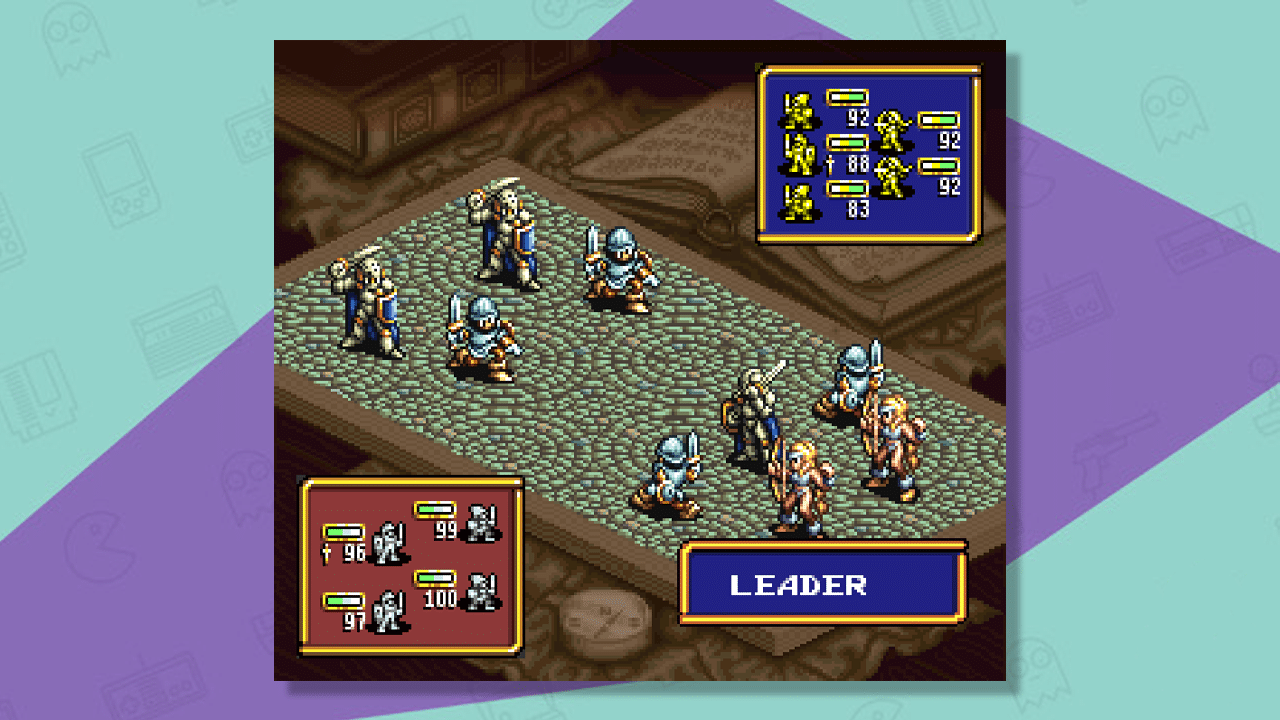
The US release was so limited – with just 25,000 cartridges going on sale in the region – that it quickly became highly sought after and expensive too.
7. Breath Of Fire II (1994)
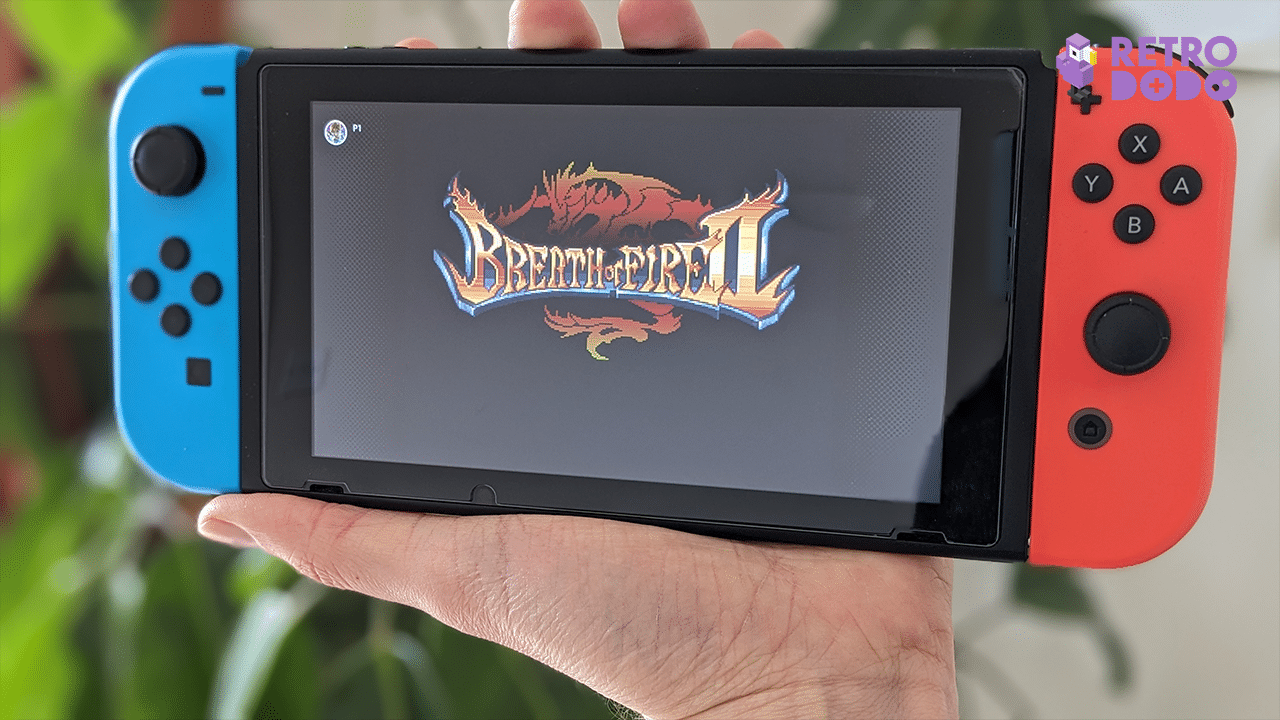
Arriving so late in the SNES lifecycle that it actually released the very same week as Sony’s PlayStation console when it appeared at retail stores in Japan in 1994, Capcom’s Breath of Fire II raised the high bar set by the first entry in the series and was very well received, both critically and commercially.
Though the Western localisation is often criticised, Breath of Fire II’s size and scope – including mechanics that see players able to build their home town over the course of the game – has always been highly praised.

Though the Western box art is also notably terrible, the in-game character design – by Capcom artist Tatsuya Yoshikawa is a highlight.
Though the series ran for a long time, there hasn’t been another since the web/mobile based, microtransaction-filled Breath of Fire 6 in 2016 – an unfortunate and undignified end for the once-beloved brand.
8. Secret Of Evermore (1995)

Another late entry to the SNES library, what makes Secret of Evermore unique is that it received a US release, followed by a PAL release a year later – and never actually made it to Japan, with release cancelled there altogether.
Developed by Squaresoft’s US team, Secret of Evermore is an action RPG with a gameplay style reminiscent of the fondly remembered, hugely successful Secret of Mana (which also makes it to this list, albeit much higher in the ranking!).
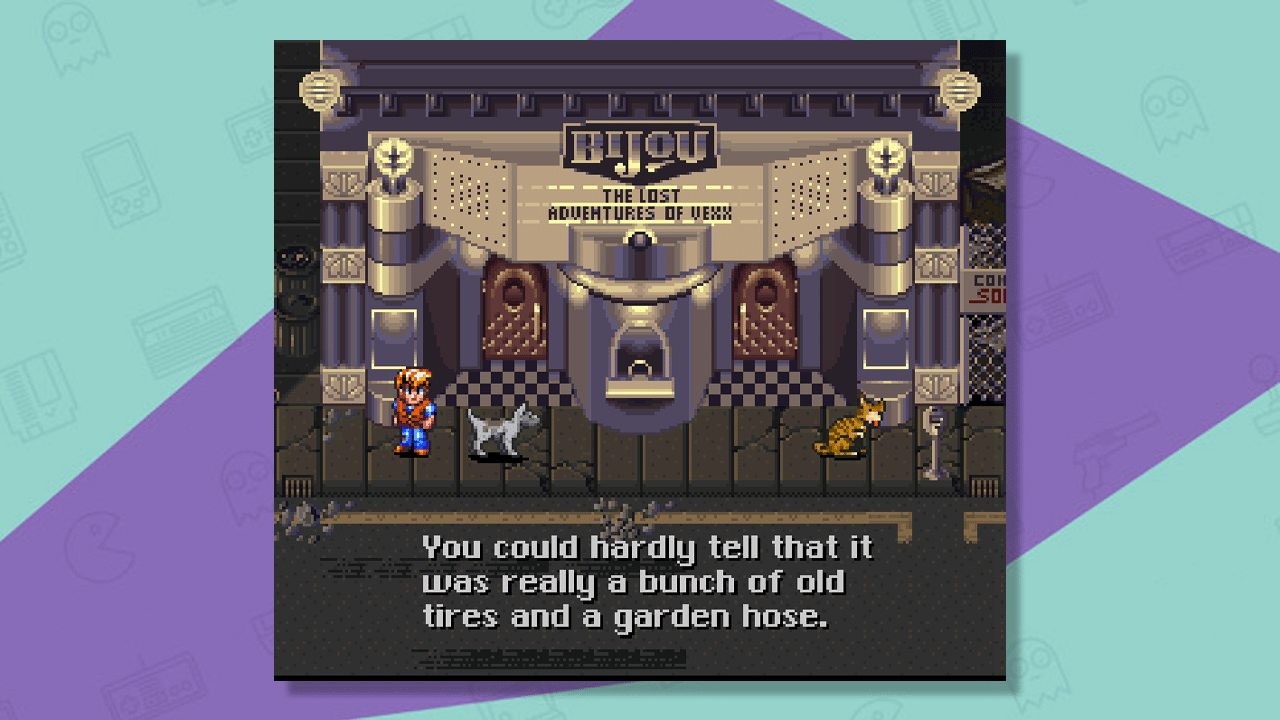
Another unique aspect of Secret of Evermore is the Alchemy system, which sees the player able to cast spells only if they’ve been given an Alchemic Formula by an NPC.
9. Illusion Of Gaia (1993)
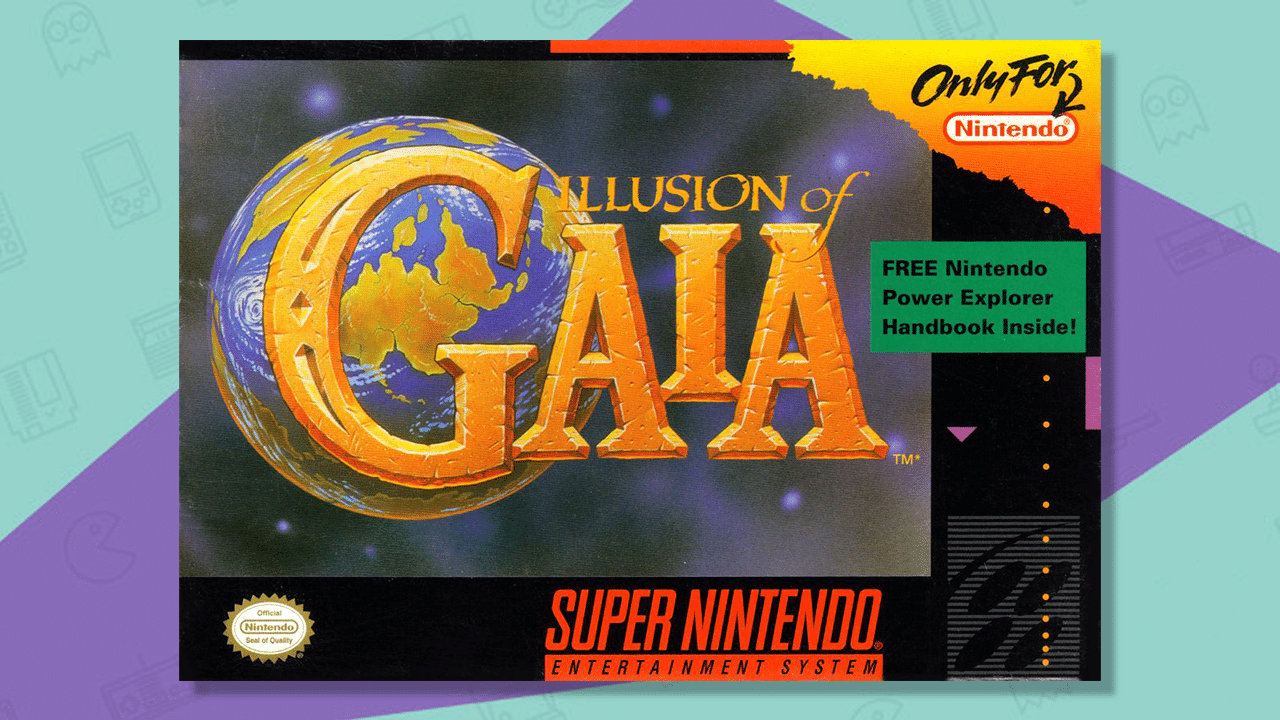
The pseudo-sequel to Soul Blazer, Illusion of Gaia (known as Illusion of Time in PAL regions – where it was belatedly released in 1995) is another Quintet classic, featuring superb action RPG gameplay, beautiful visuals, a compelling storyline and an excellent soundtrack.
With a pseudo-historical setting and numerous real world locations, much like the later Terranigma there are a number of religious references included.
However, these were altered – along with a few of the darker elements – for the Western releases. The game has three characters, each with unique abilities – and interestingly, there’s no currency or equipment.

It’s a unique and engrossing game that ended up being a huge hit – selling more than twice as many cartridges worldwide as Soul Blazer.
It’s another great showcase for the Best SNES RPGs list – ably demonstrating how varied and unique many of the console’s RPG titles were.
10. Brain Lord (1994)
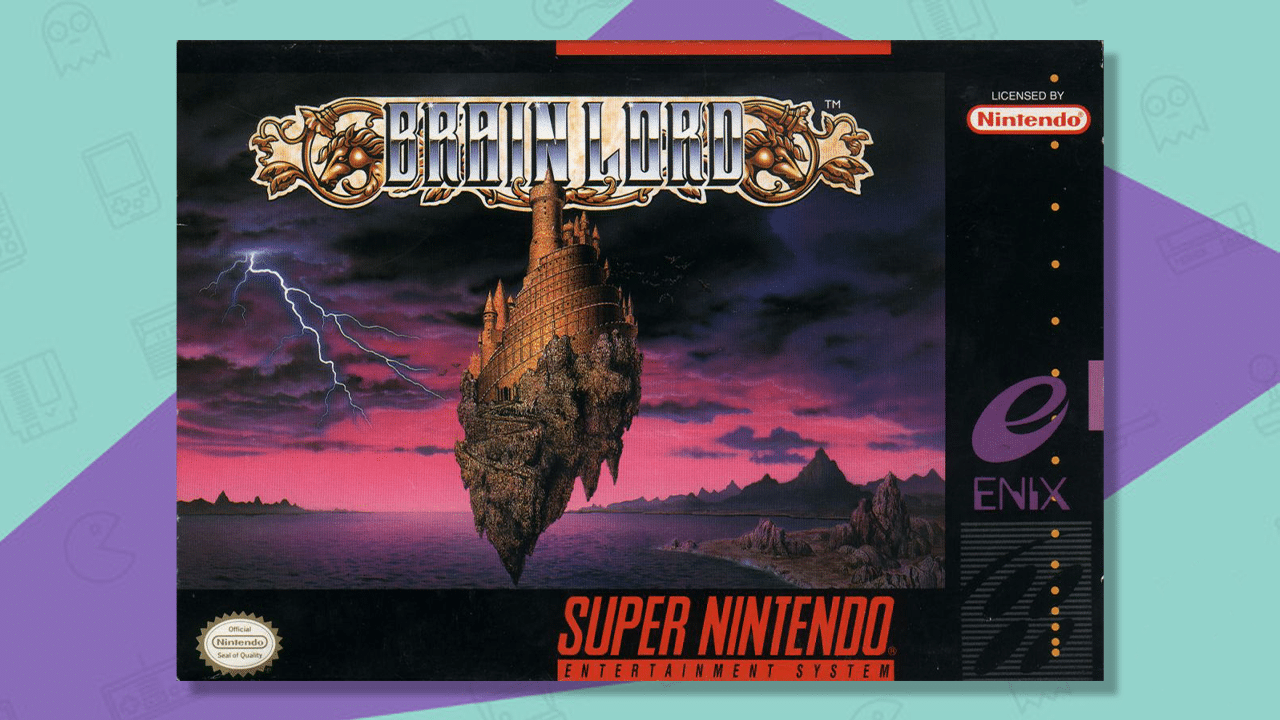
Dragon warriors; that’s the best way to grab someone’s attention when you’re talking about RPGs, right?
The problem is, Brain Lord is set in a time where all the dragons have disappeared, and now there’s a last-ditch attempt to find the final few hiding dragons in the mysterious Tower of Light.
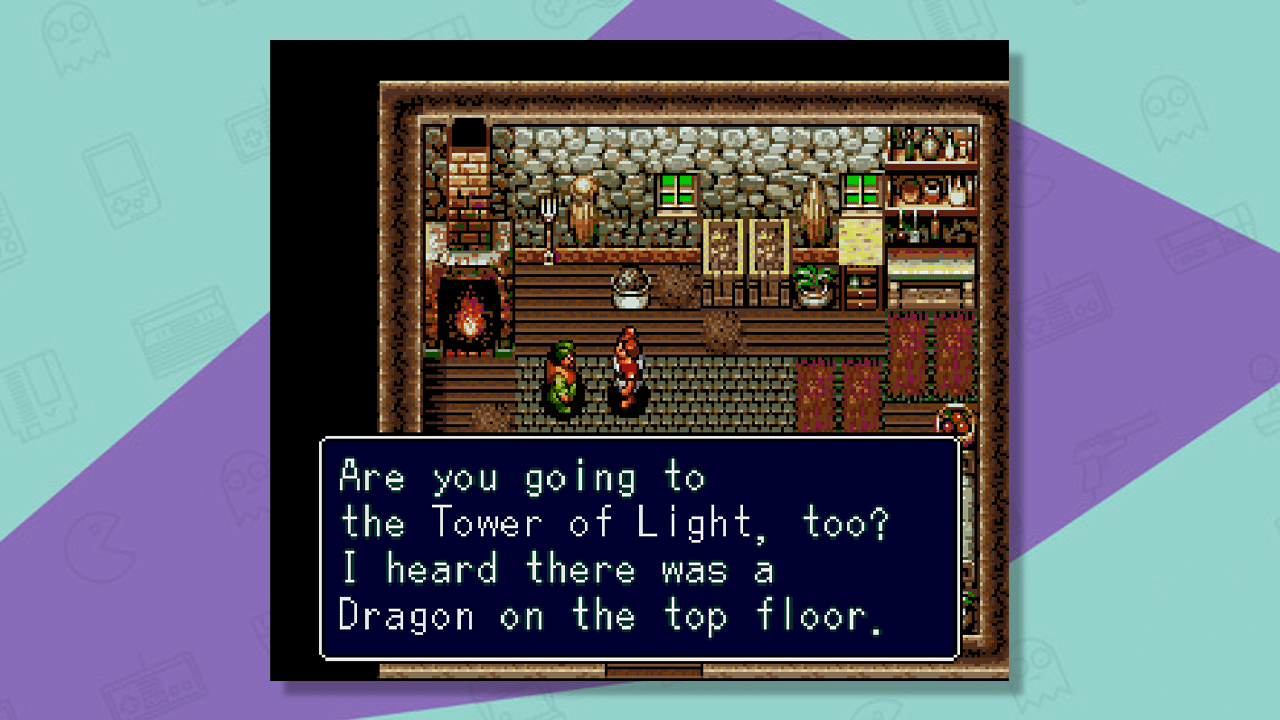
The key to success in Brain Lord is exploring. Leave no stone unturned, collect armour and weapons, and use fairies to fight with you in battles.
They’re not like the fairies in Zelda either; these guys mean business!
With plenty of puzzles to sink your teeth into and enemies that are four times the size of you, the quest to find the lost dragons will be one that you’ll never forget.
11. Terranigma (1995)

Unusually for any game, let alone an action RPG, Enix’s Terranigma released in Japan and PAL regions only, skipping North America entirely.
It’s a shame, because Terranigma is an absolutely wonderful game with an excellent soundtrack, great gameplay and an excellent, perhaps controversial setting with clear religious themes.
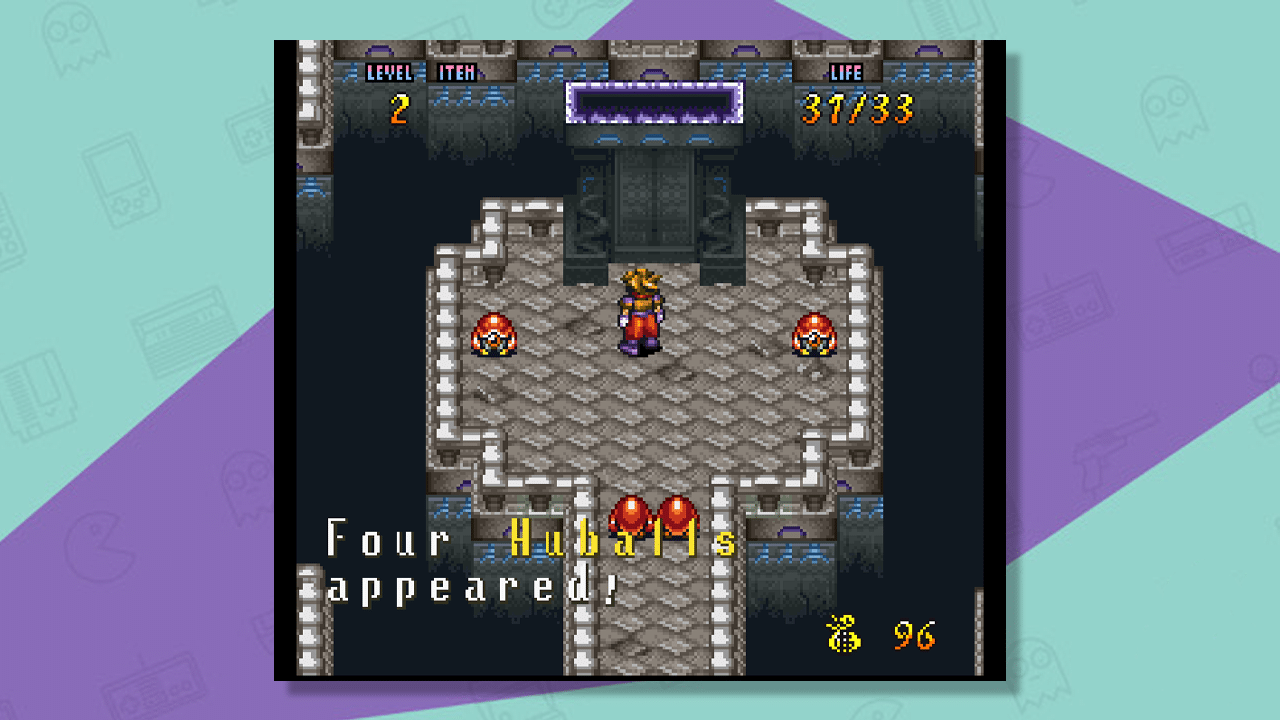
With developer Quintet’s expertise in action RPGs by this stage (their other titles, Soul Blazer and Illusion of Gaia, are of course here too), it’s no surprise to see Terranigma make the list.
12. Soul Blazer (1992)
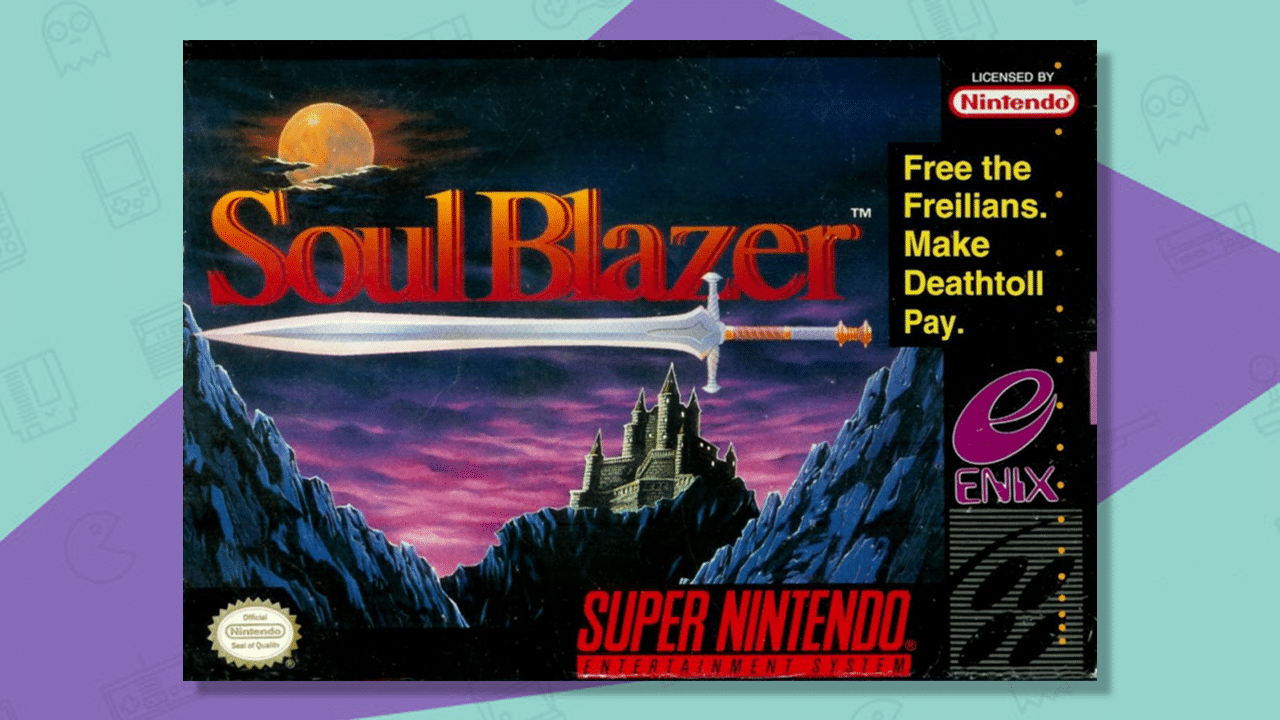
Released in Japan as Soul Blader, this action RPG didn’t even make it to PAL regions until 1994 (the EU and Australia were particularly poorly served during the SNES era, it has to be said).
The game was well received critically, with one reviewer at classic 90s gaming magazine EGM even going so far to state that he thought it was ‘actually more fun to play’ than The Legend of Zelda: A Link to the Past.
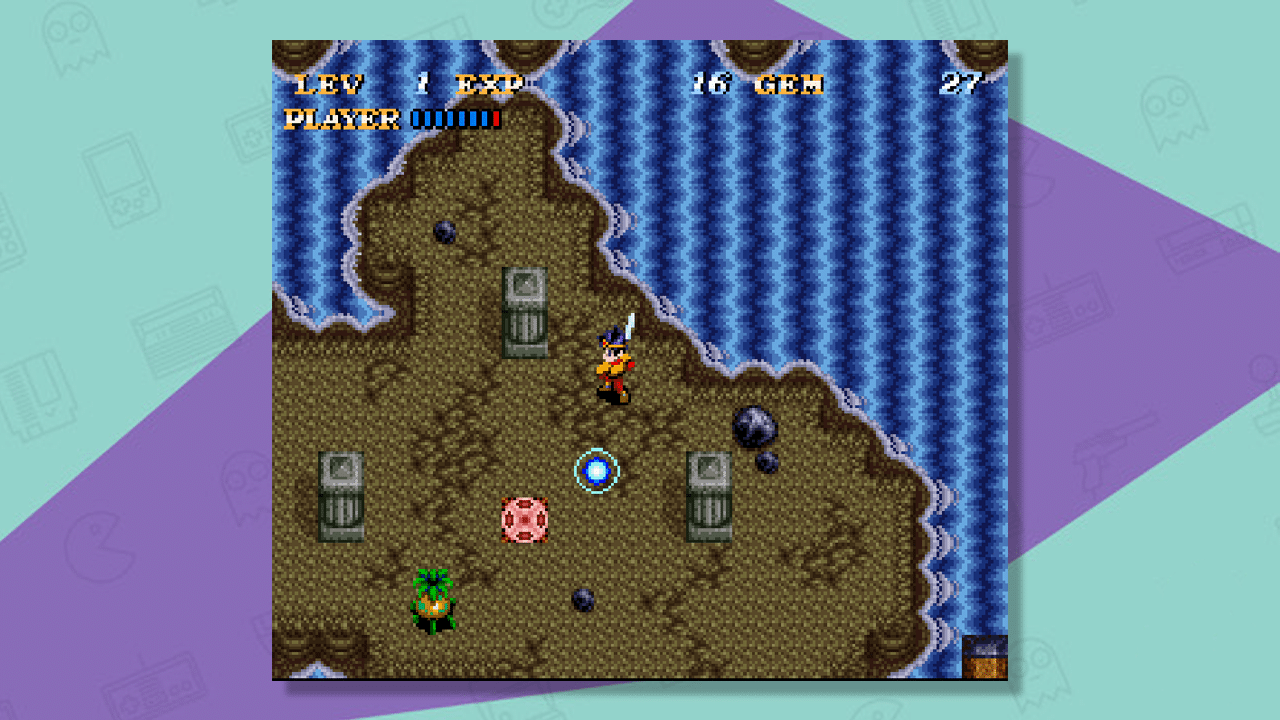
Though that’s debatable, there’s no denying that Soul Blazer is an excellent game with a unique storyline, based around the main character freeing and restoring captured souls by destroying lairs in dungeons – with the recovered souls re-populating the town located near the current dungeon.
Towns become restored and rebuilt as more souls are returned to them, with NPCs engaging in dialogue and passing useful new items on to the player as thanks for their reincarnation. Despite how highly regarded Soul Blazer is, it’s never been re-released in any form.
13. Lufia II: Rise Of The Sinistrals (1995)

Arriving late in the lifespan of the SNES, Lufia II was – despite the name – actually a prequel to the first game in the series, Lufia & the Fortress of Doom.
Named simply Lufia in PAL regions (where the original game wasn’t released on SNES), Lufia II’s gameplay sees players exploring an overworld in real time, entering dungeons where exploration – interestingly – becomes turn-based, meaning the enemies don’t move unless the player characters do.
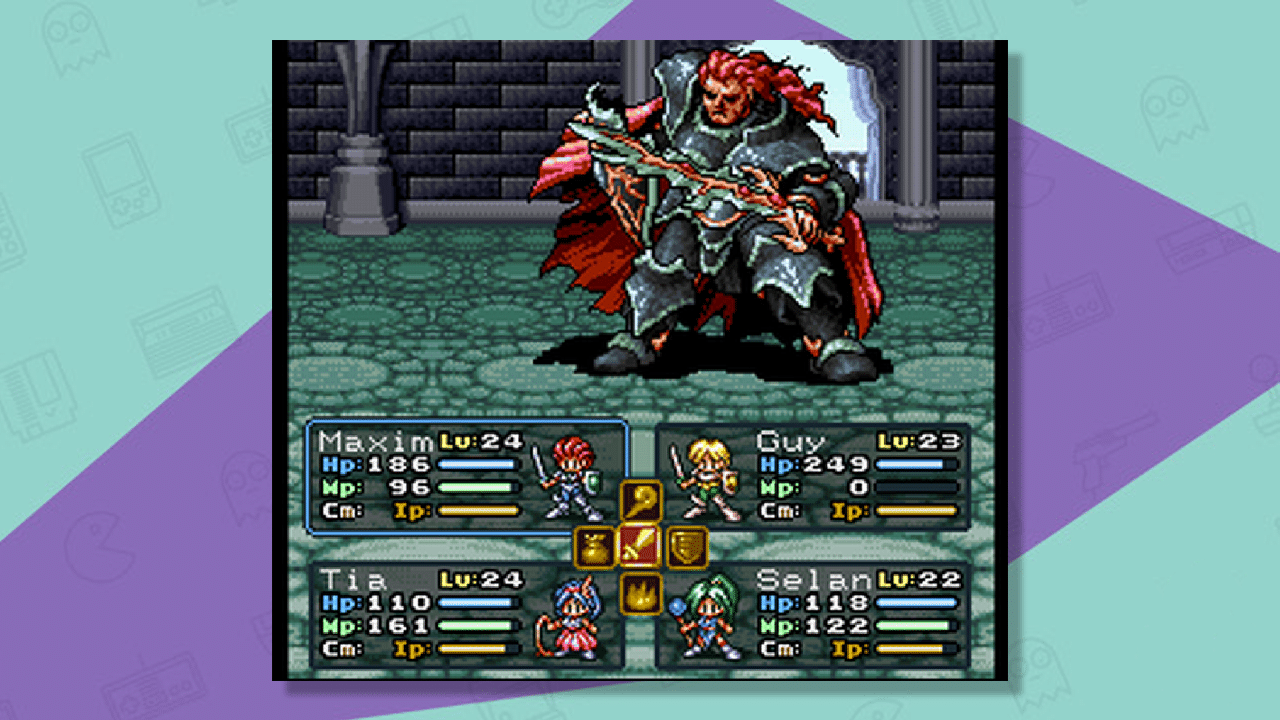
Combat is also turn-based – and there are a number of Casino mini-games that players can while away their time with in the game world too (pachinko, poker, fruit machines, blackjack and bingo).
With unique visuals, an excellent storyline and a great soundtrack (for its time), Lufia II may not be the best known title on the list, but it definitely deserves its place here.
14. Fire Emblem: Genealogy Of The Holy War (1996)
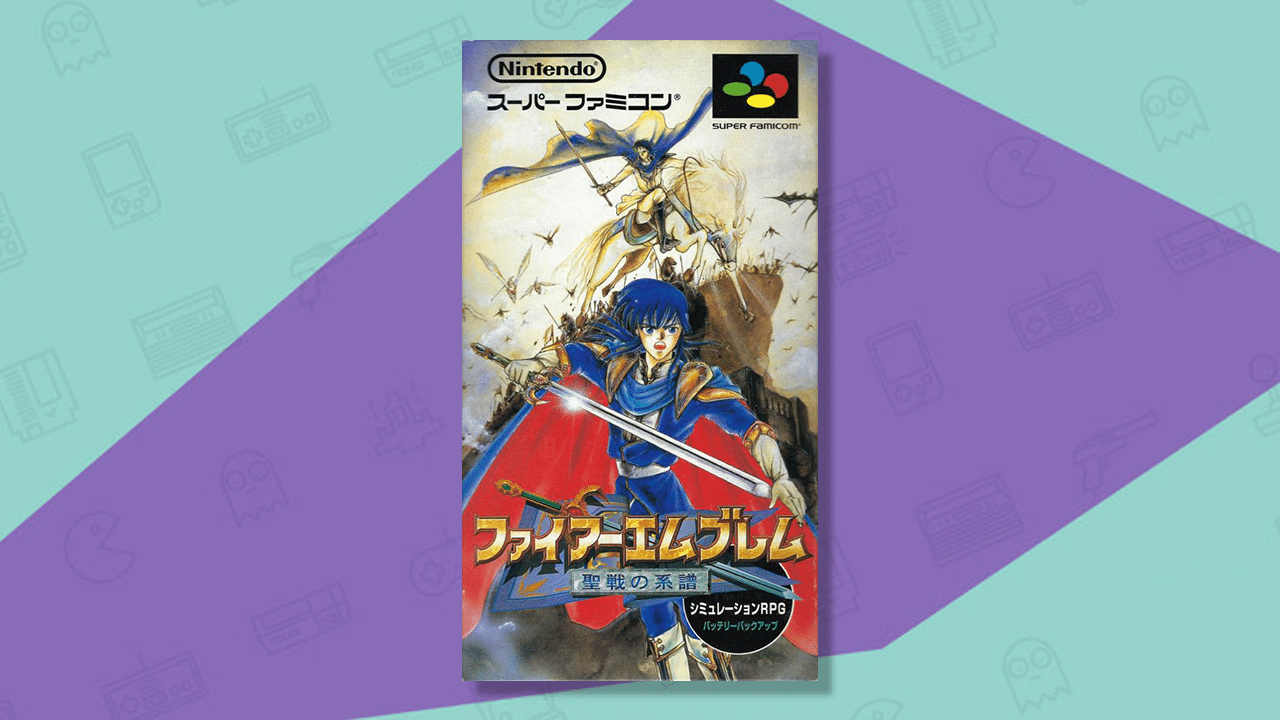
We can’t have a list of the best SNES RPGs without Fire Emblem: Genealogy of the Holy War now, can we?
This game was never released outside of Japan, so many of you won’t have played this first time around. It’s well worth finding a copy and acquainting yourself with the fourth title in the series, especially if you’ve just recently begun playing Fire Emblem Engage and following our guides.
Turn based brawls, large maps to explore, the weapons triangle; it’s got it all and more.
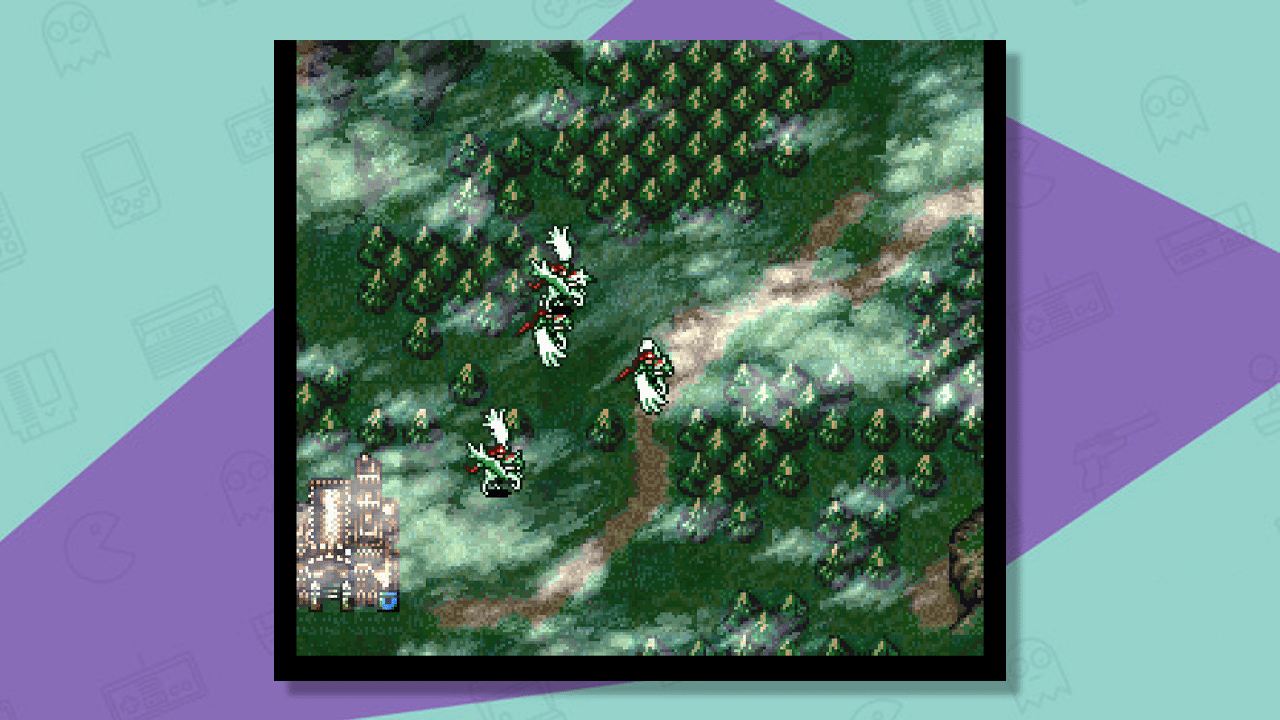
I’ve always thought that Fire Emblem games are some of the most taxing when it comes to brain power, and this one is no exception.
There’s a certain early Zelda feel meets Final Fantasy to the explorative parts of the gameplay for all those that have never played it before. That’s a massive generalisation as there are a lot of differences, but for those complete newbies to the SNES world, it should give you an idea as to what you’re letting yourself in for.
15. Earthbound (1994)
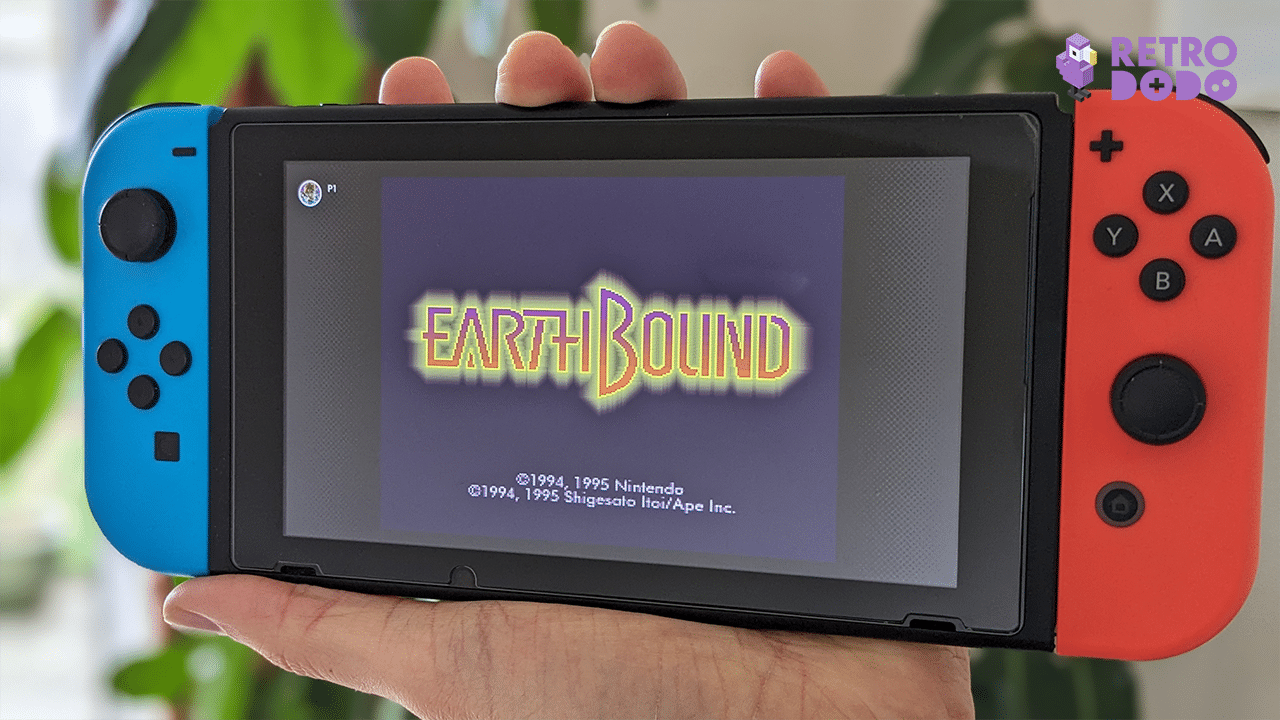
Most lists would likely put EarthBound way closer to the top of best SNES RPGs, but in my opinion it has aged less gracefully than many titles on the list, thanks to some obtuse and frustrating design elements.
However, its self-referential, fourth-wall breaking story is still just as amusing and interesting even now – and the then-contemporary suburban setting marks it out as unusual for SNES role playing games, with an almost Spielbergian take on American childhood touched by the fantastical.
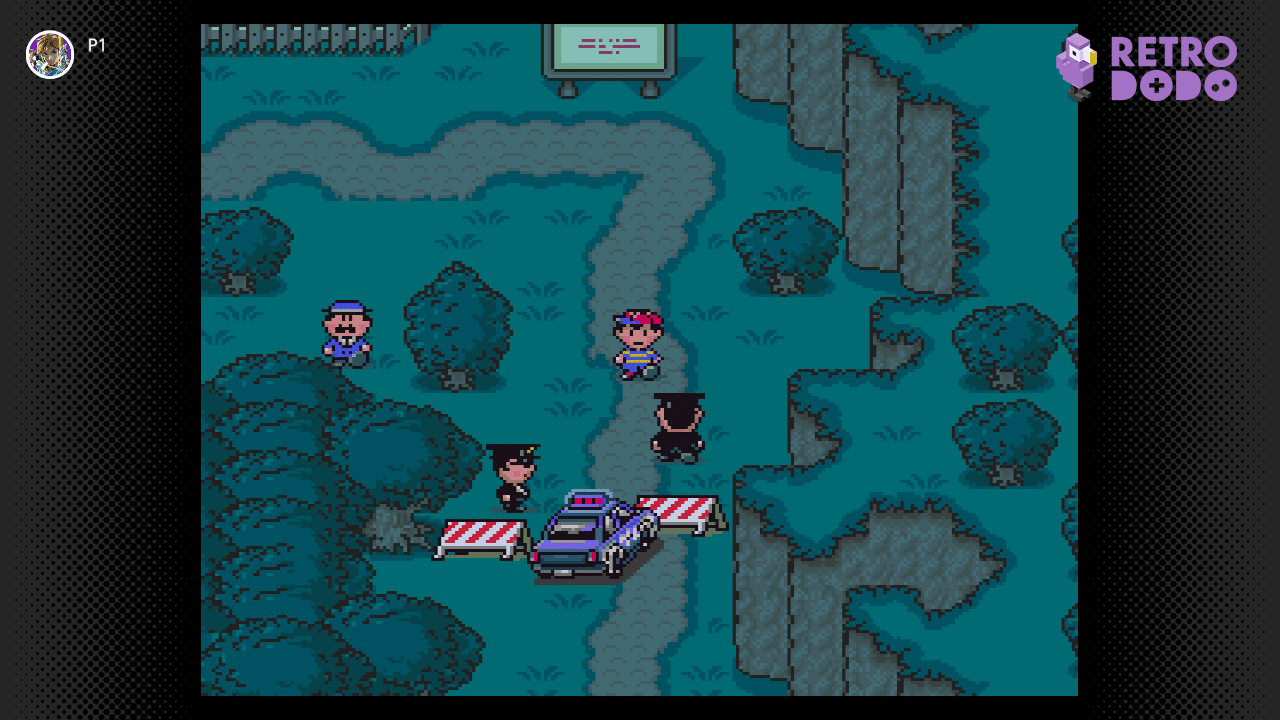
Earthbound became legendarily sought after, making even a release on the Wii U Virtual Console a big event (though the Wii U’s disastrous commercial performance meant that Earthbound’s digital re-release made far less of a splash than it otherwise would have).
16. Shadowrun (1993)
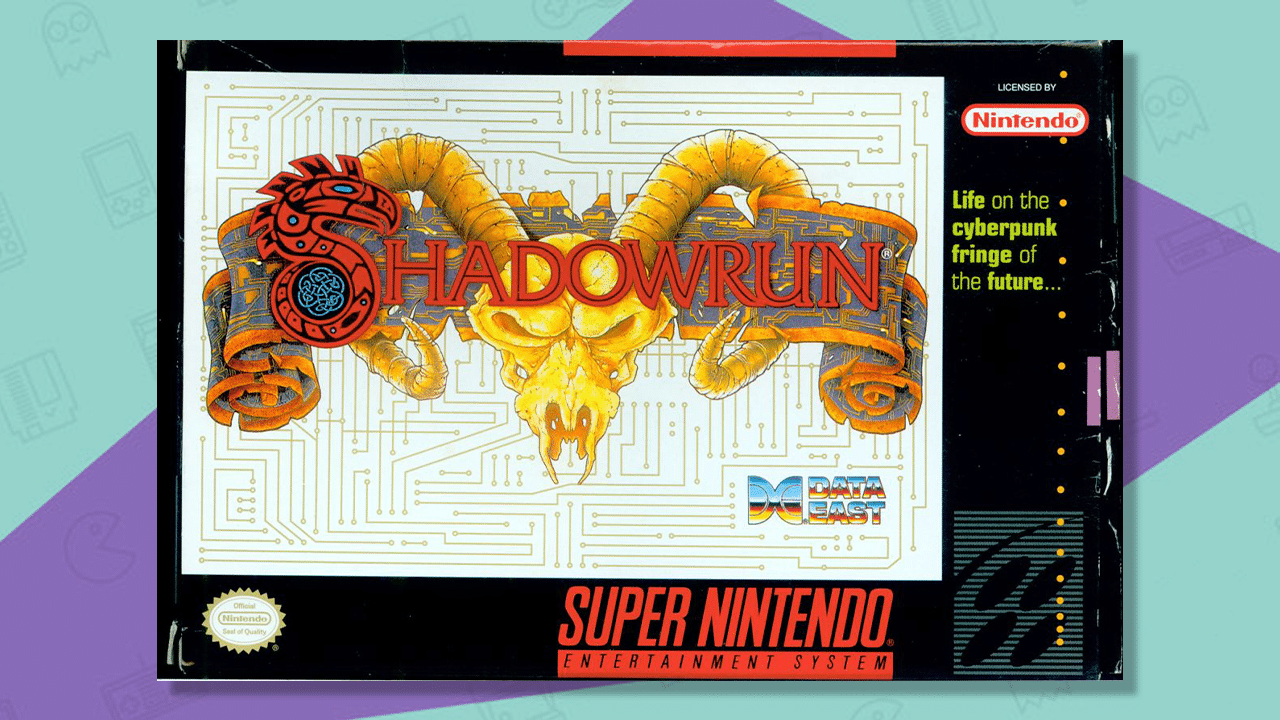
Based on a popular tabletop RPG that launched in 1989 (and is now on its Sixth Edition, which launched in 2019), Shadowrun is set in a predominantly cyberpunk world, albeit one that has seen the emergence of fantasy creatures such as orcs, elves and dragons – as well as the return of actual magic and shamanism to the world in the 21st century.
The sci fi/fantasy mashup is appealing and unique, but what makes this SNES version of the RPG so good is an incredible atmosphere (with brilliantly designed visuals), a phenomenal soundtrack and fantastic storyline – which sees player character Jake Armitage gunned down and murdered in a pre-game sequence, only to return to life in the morgue in the game’s opening scene.
Character interaction is well handled, with dialogue options that can be expanded once the amnesiac Armitage hears certain key words to add to his vocabulary. Combat has a stat-based feel, but occurs in real time.
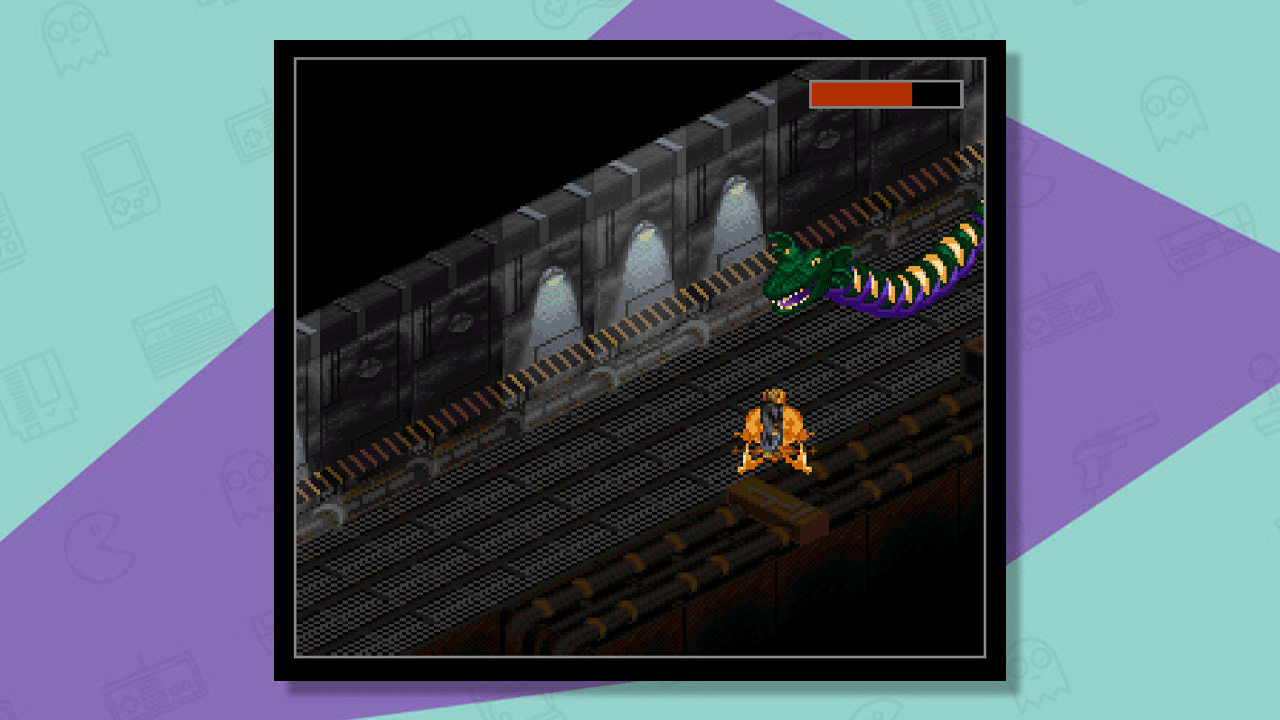
There’s even a Minesweeper-esque minigame when hacking computers in the game’s version of the internet (known in-universe as ‘The Matrix’, long before the movies).
Shadowrun wasn’t a huge hit upon release, but it was remarkably ahead of its time for a console RPG and spawned a belated series of sequels, starting in 2013 with the hugely successful, Kickstarter-funded PC game Shadowrun Returns (in which Jake Armitage even makes a cameo).
Interestingly, Shadowrun is also one of the only non-Japanese developed titles to make our list.
17. Robotrek (1994)
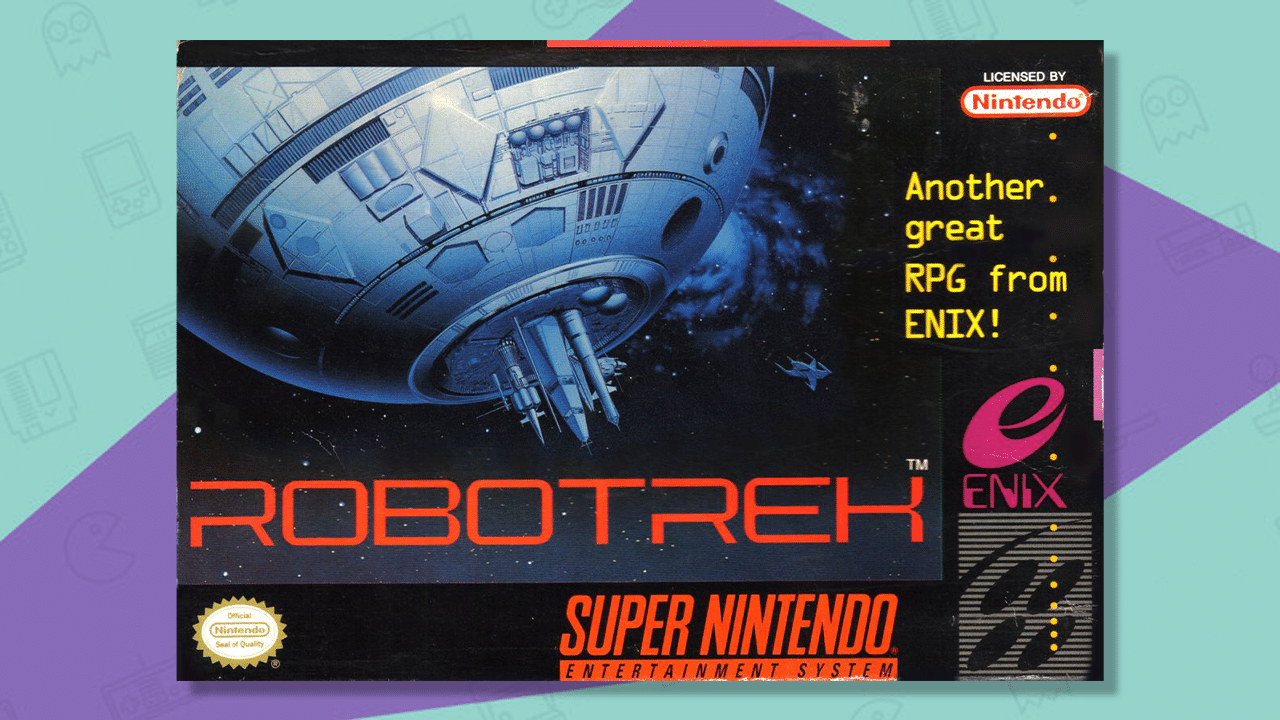
Let’s throw some Steampunk vibes into the mix, shall we? Like most of the RPGs on this list, players go through a top-down adventure and switch to a side-on view for battle segments.
But the real winning element of Robotrek is the fact that players must discover the skills needed to build their very own robot.
Yes, it’s a dream come true!
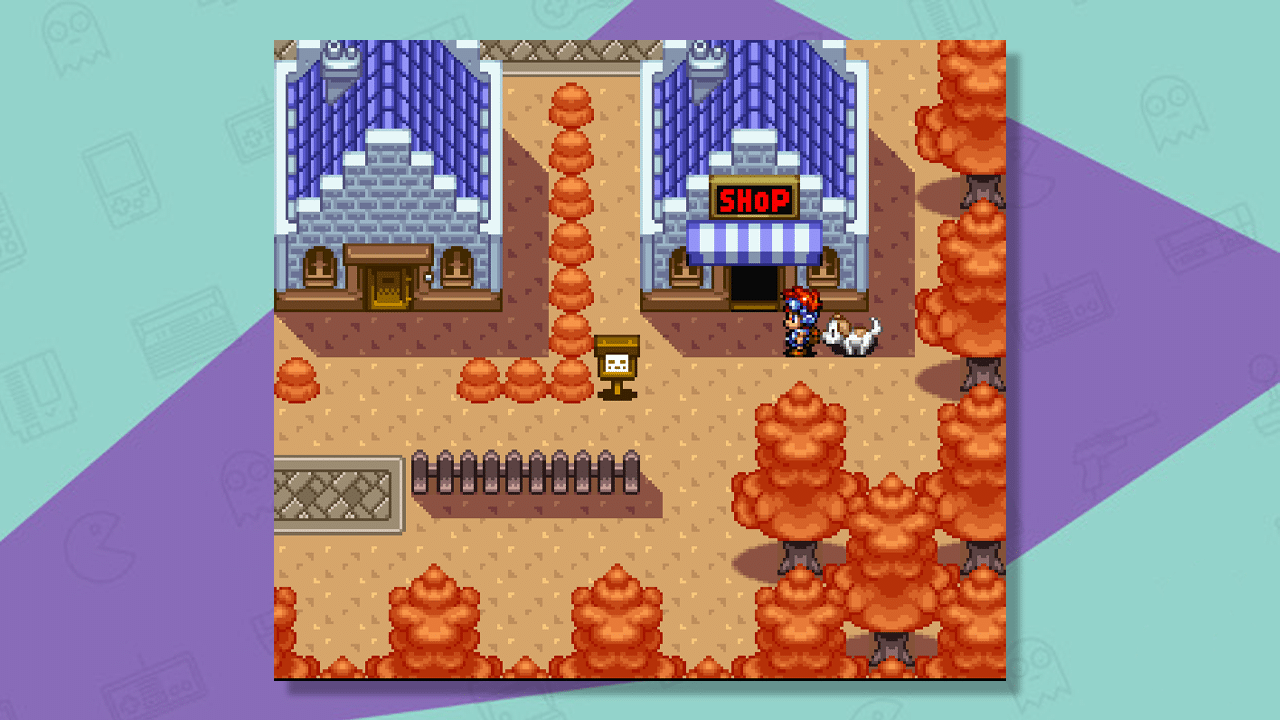
Make robots, send them to fight for you, and win battles. Imagine if Pokemon was filled with mechanical monstrosities and you’ll get the idea.
It’s also a great game for the inventive amongst you aswell. Players must get imaginative and create new and wonderful gadgets and gizmos to get through puzzles and problems. It’s not Scribblenauts, but it’s still one for those that think outside of the box!
18. The Legend Of Zelda: A Link To The Past (1991)
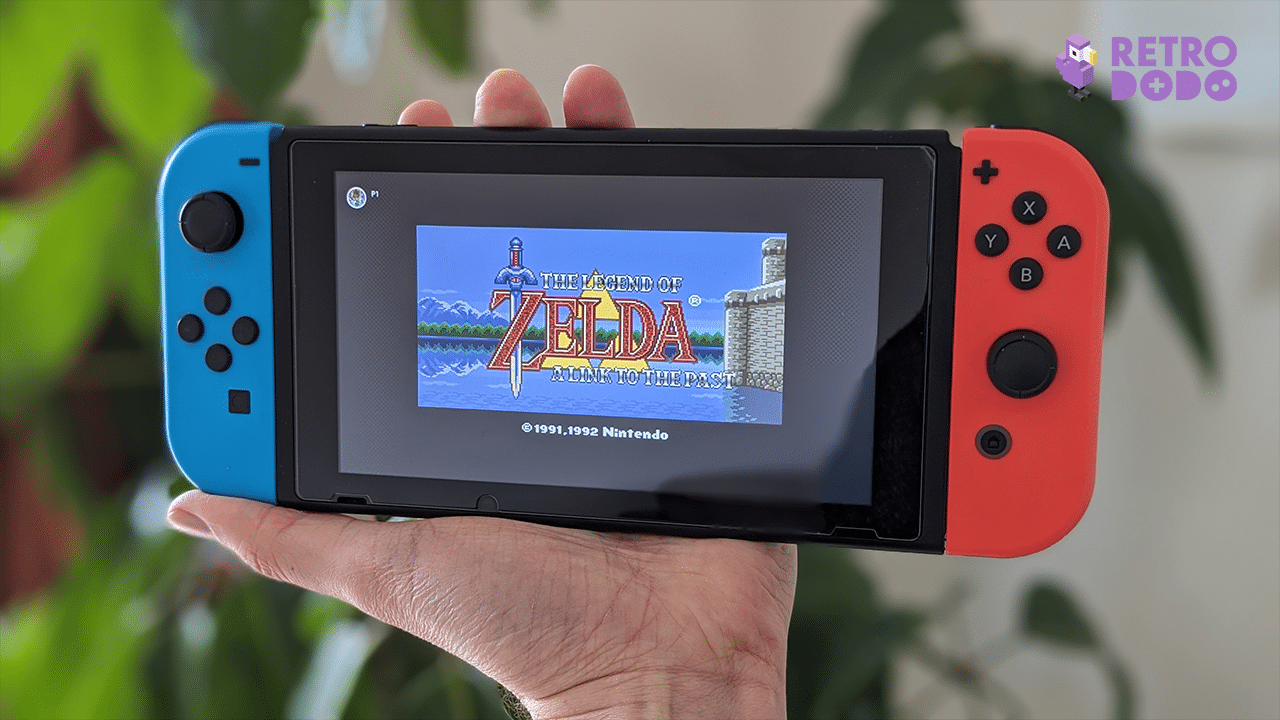
Though this is perhaps a controversial entry, there’s already been some outliers included in this list in terms of ‘traditional’ (or otherwise) RPG mechanics and styles, so I think that A Link to the Past’s inclusion is absolutely justified.
The third game in the Zelda series, A Link to the Past is a phenomenal game that has absolutely stood the test of time – and it only ranks as low as it does due to its aforementioned lack of RPG tropes such as experience, levelling up and its focus on action over more story-based elements.
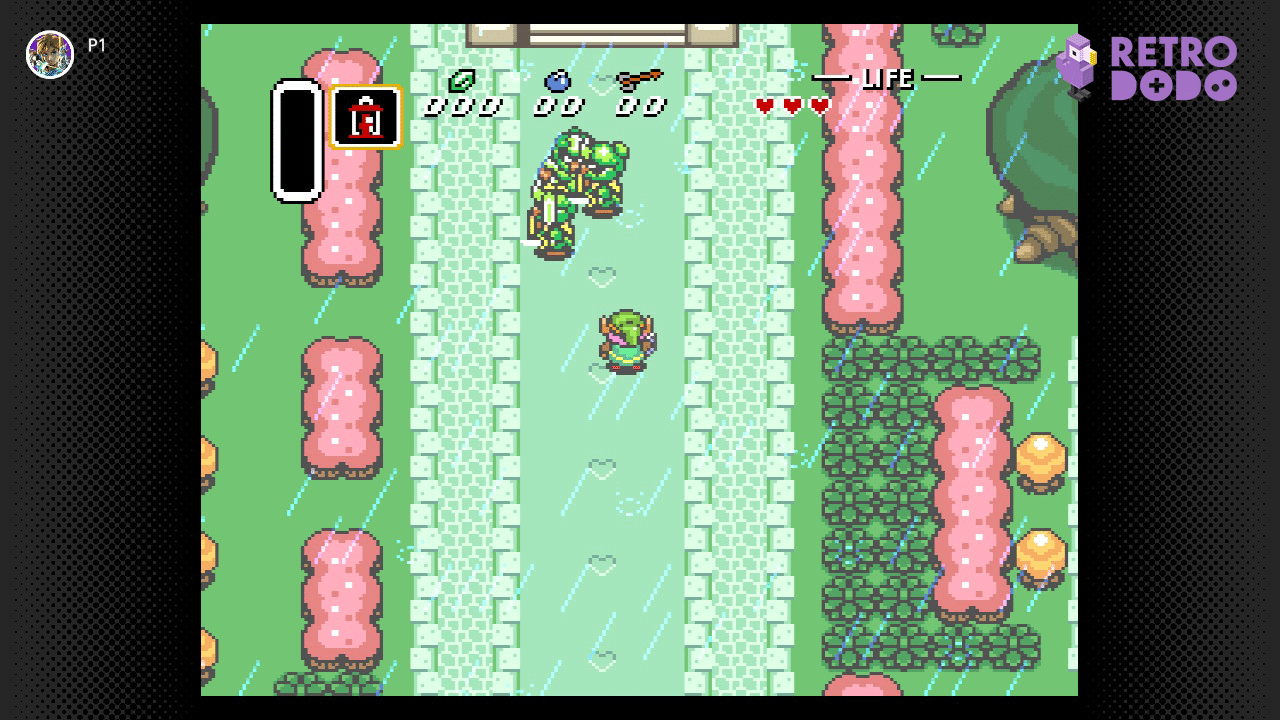
It’s hugely atmospheric, undeniably compelling and was an almost unbelievably ambitious undertaking in its day. An absolute classic.
19. Dragon View (1994)
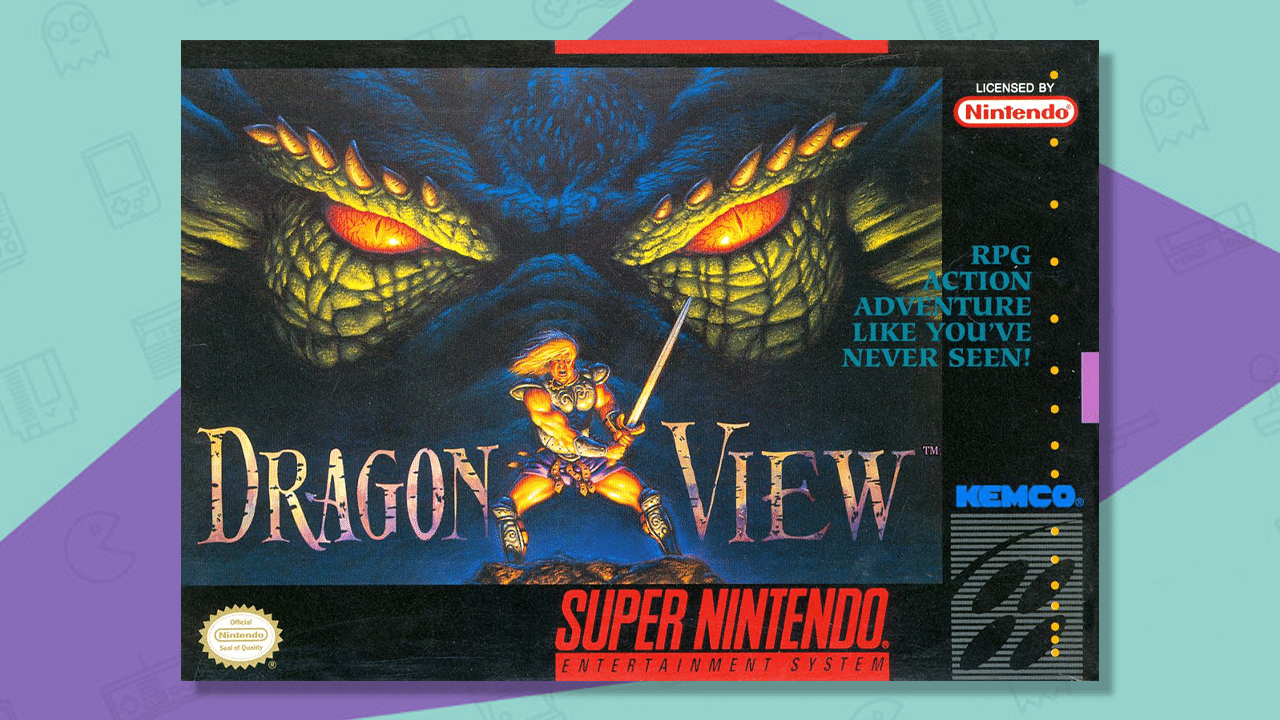
Intended to be the sequel to Drakkhen, Dragon View benefits from much better translation and a more refined visual style than its predecessor. The same open, 3D exploration of the overworld can be found here and – though it could still do with a bit more direction – the freedom this provides to explore the world is pretty amazing, especially given how linear most games were at the time.
It’s another example of an excellent, though definitely underrated, SNES RPG; Nintendo’s 16-bit console really was an absolute dream for RPG fans, who were spoilt for choice with games that easily fit into numerous sub-genres.
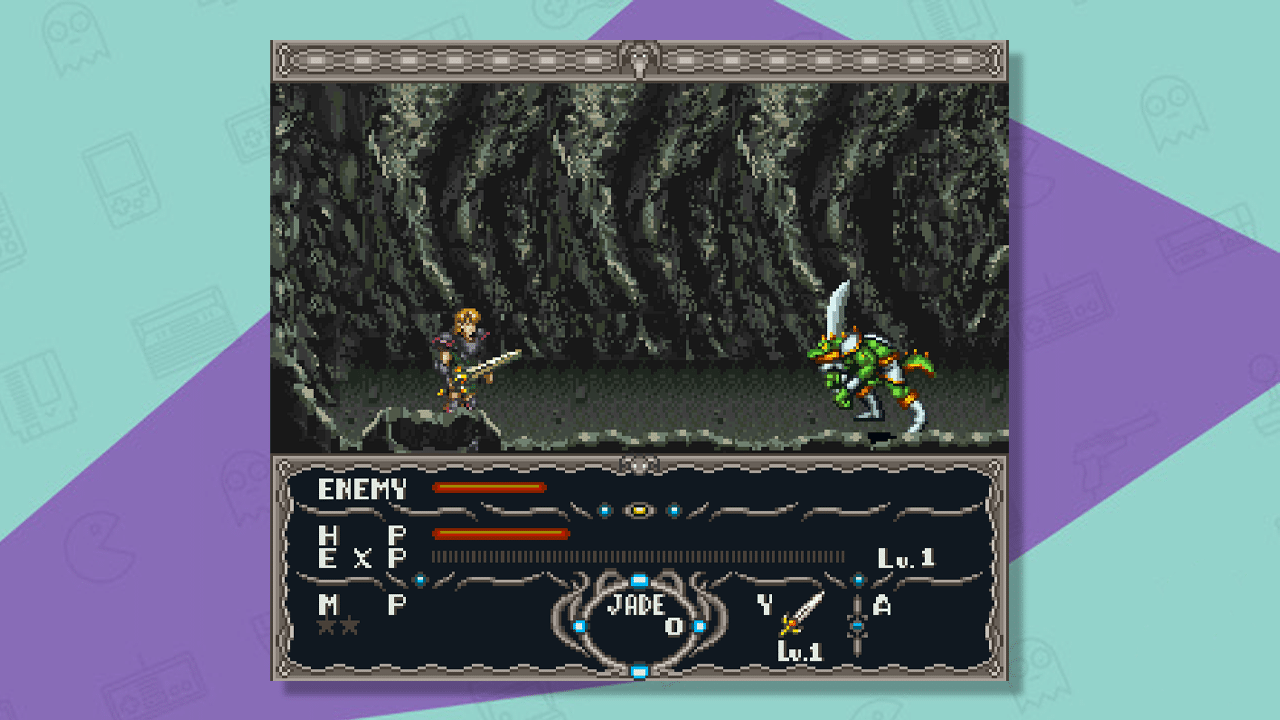
Dragon View is even being re-released on the SNES (see our Dragon View – new SNES cartridge story for more on that!) and features on the same Piko Interactive Collection 1 cartridge for Evercade as Drakkhen, making that a compilation that 90s RPG fans should definitely check out!
20. Drakkhen (1991)
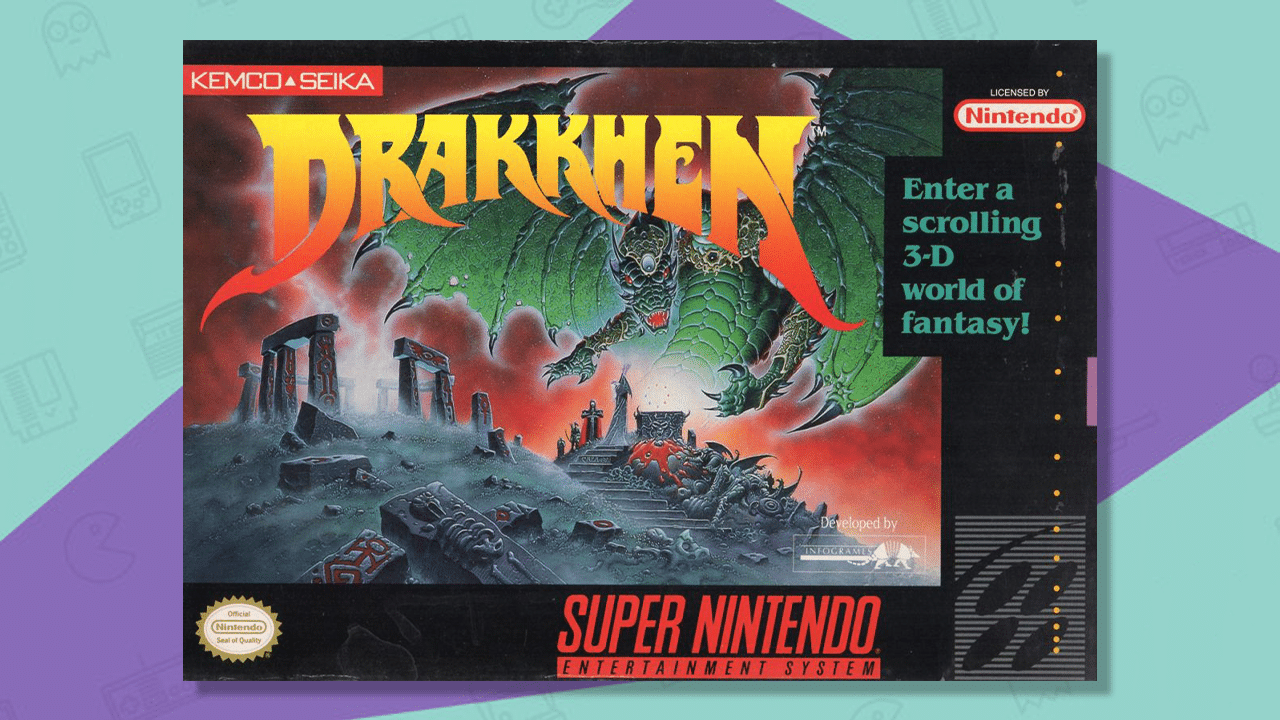
Another trailblazing title that was very different to other role playing games on the SNES, Drakkhen was a game that was perhaps a little too ahead of its time.
The party-based adventuring took place in 2D rooms – with a good amount of exploration and combat – when inside buildings, but when exploring the impressively huge, very open overworld, the action switched to a first person view, with the 3D being genuinely amazing at the time.
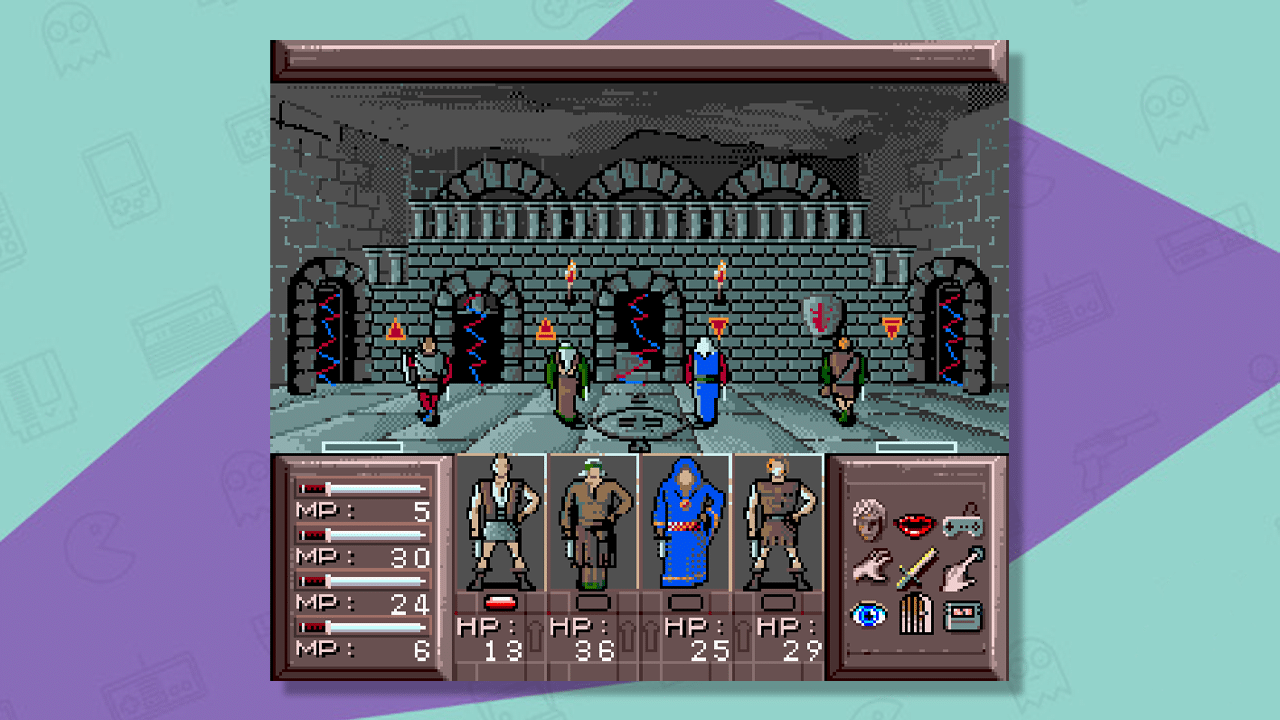
Translation issues and a ridiculously high level of difficulty – along with a lack of signposting or direction – make this a tough game to progress in, but it’s an excellent RPG experience if you have a guide to hand, as you will definitely get stuck! Drakkhen is also available on the Evercade these days, so it’s easier than ever to track down and play a legitimate copy – with the added advantage of saves states being included too. Check it out on our list of the best Evercade games!
21. Advanced Dungeons & Dragons: Eye Of The Beholder (1994)
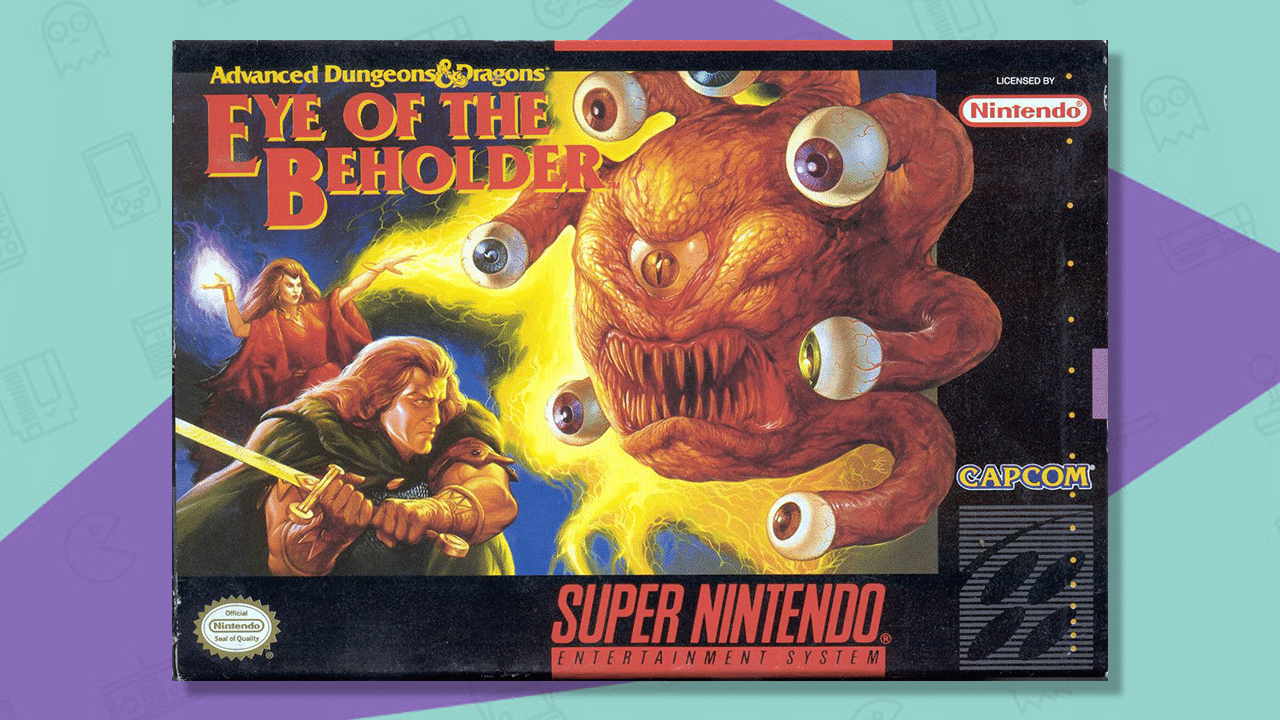
With Dungeon Master having taken clear inspiration from tabletop RPG Dungeons & Dragons, it perhaps feels less cheeky that an official D&D licensed game would then go on to be, for want of a better word, inspired in turn by Dungeon Master for an officially licensed video game.
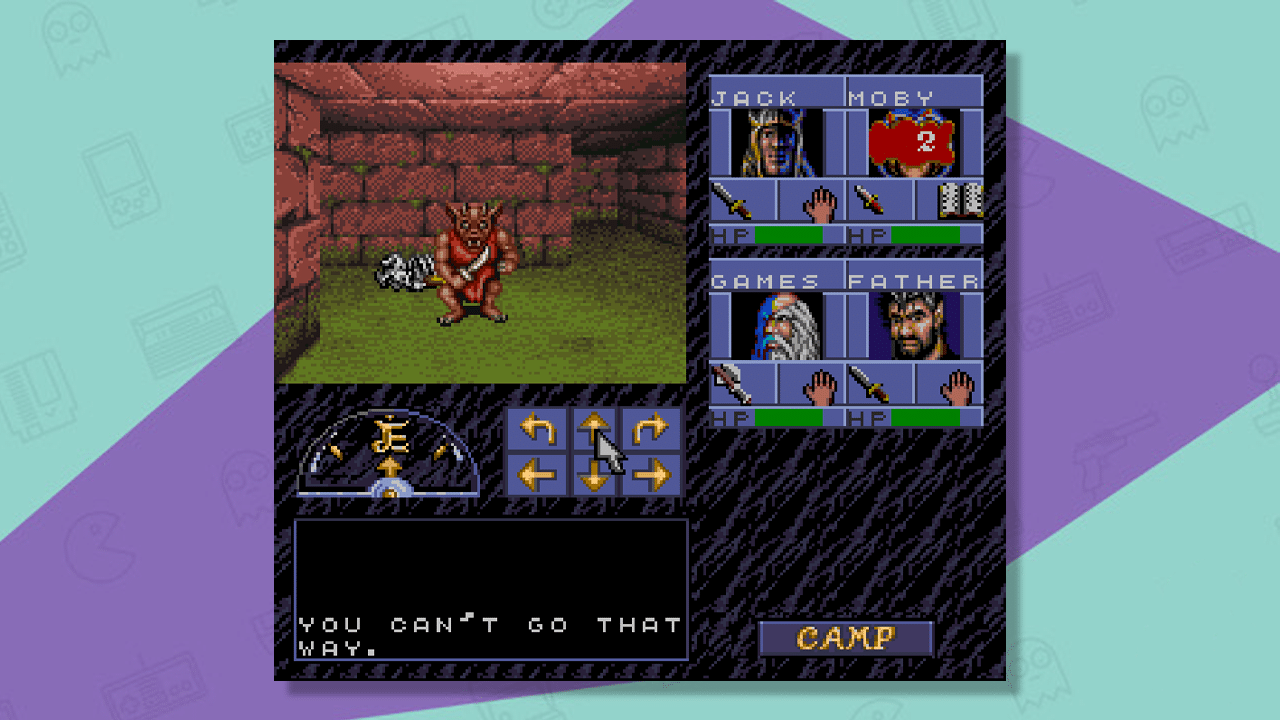
That’s exactly what happened with Eye of the Beholder, a first person Dungeons & Dragons RPG that really does look like an evolution of the Dungeon Master formula. Surprisingly, Capcom were responsible for bringing Eye of the Beholder to the SNES – and the party based, dungeon crawling expedition was a serious hardcore RPG challenge, very different to the Japanese RPGs that were (and still are!) so critically lauded on Nintendo’s console.
22. Dungeon Master (1991)
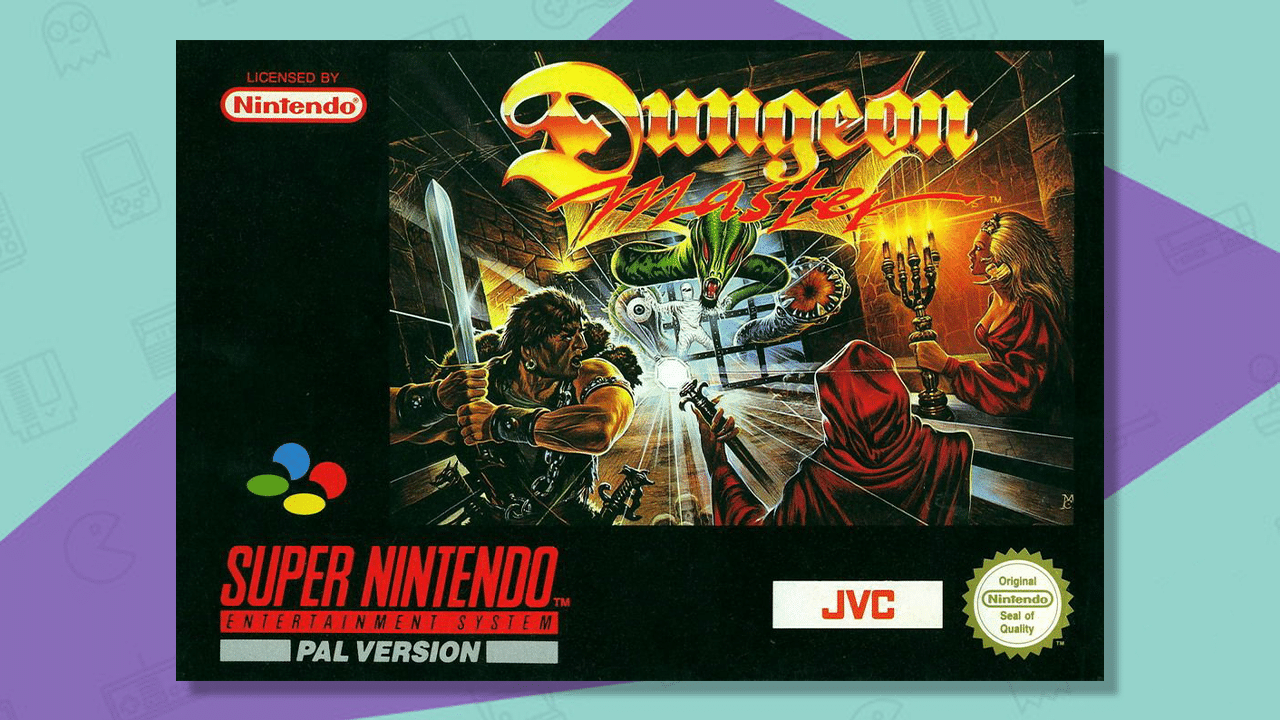
Though highly regarded upon release on home computers in 1987, Dungeon Master’s SNES version is less fondly remembered. At the time, it perhaps felt a little dated – especially when up against such stiff RPG competition on the SNES, with technical, narrative masterpieces such as the Final Fantasy games being available on the 16-bit console.
As such, Dungeon Master was the victim of unrealistic expectations, but it didn’t help that the first-person, menu-heavy, mouse-controlled action of the original computer game translated a little awkwardly to the SNES and its controller.
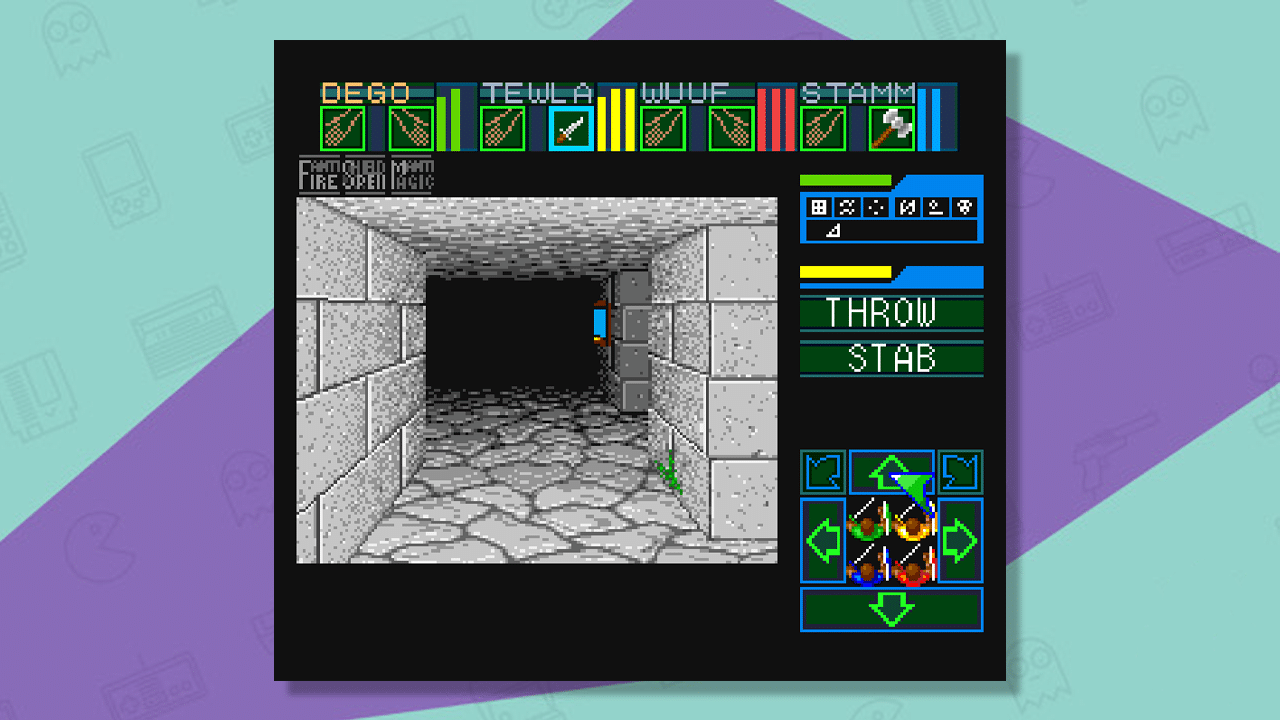
Yet, these issues aside, Dungeon Master is perhaps one of the best examples of a fairly open, dungeon-crawling, real time RPG that felt really immersive and akin to having a session of Dungeons and Dragons without having to get together a group of friends around the tabletop – and without the hours of preparation for the person running the game either!
23. Arcana (1992)
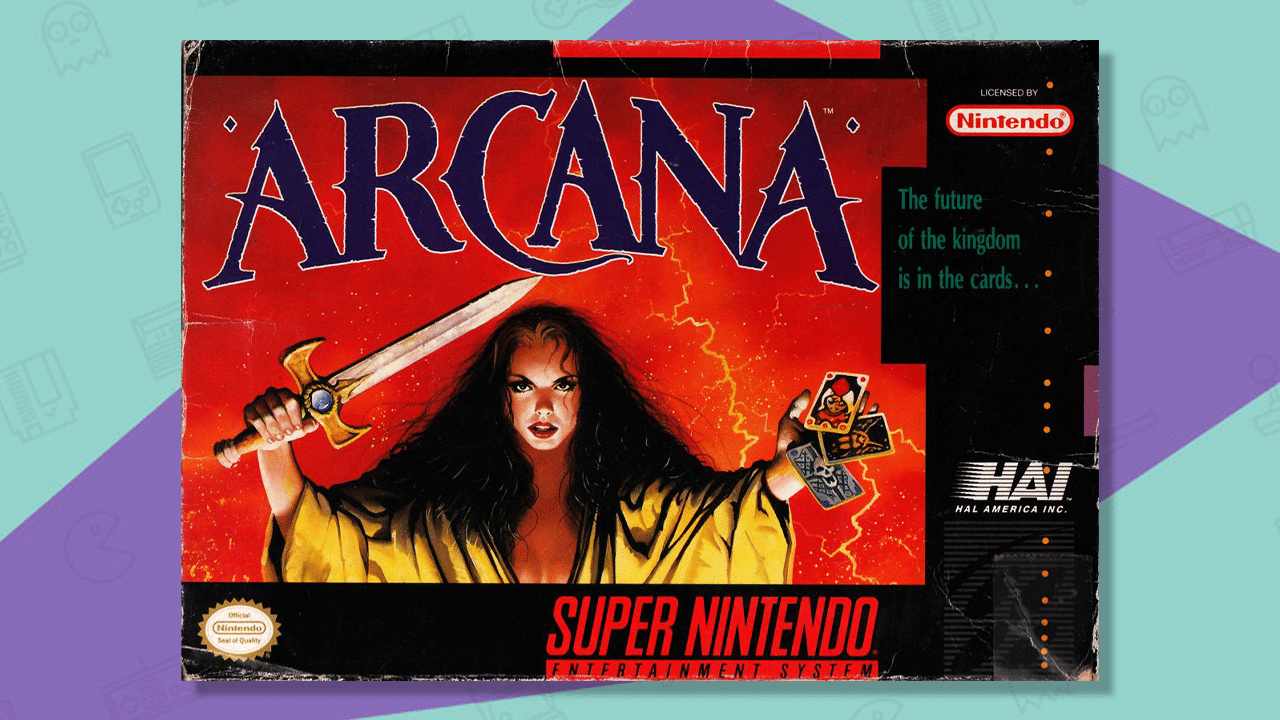
A unique RPG from HAL Laboratory (who were also responsible for creating the Kirby and Earthbound series), Arcana is a first person RPG with characters, attacks and even elements of its plot based around cards.
Players explore towns and dungeons from a first person perspective, their characters, NPCs and enemies all being represented as illustrations on cards.
There’s an awful lot of depth to the game’s combat system, which can be a bit daunting when starting out – but the unique setting and nicely detailed world, not to mention the unique card-based mechanics, make it worth persevering.
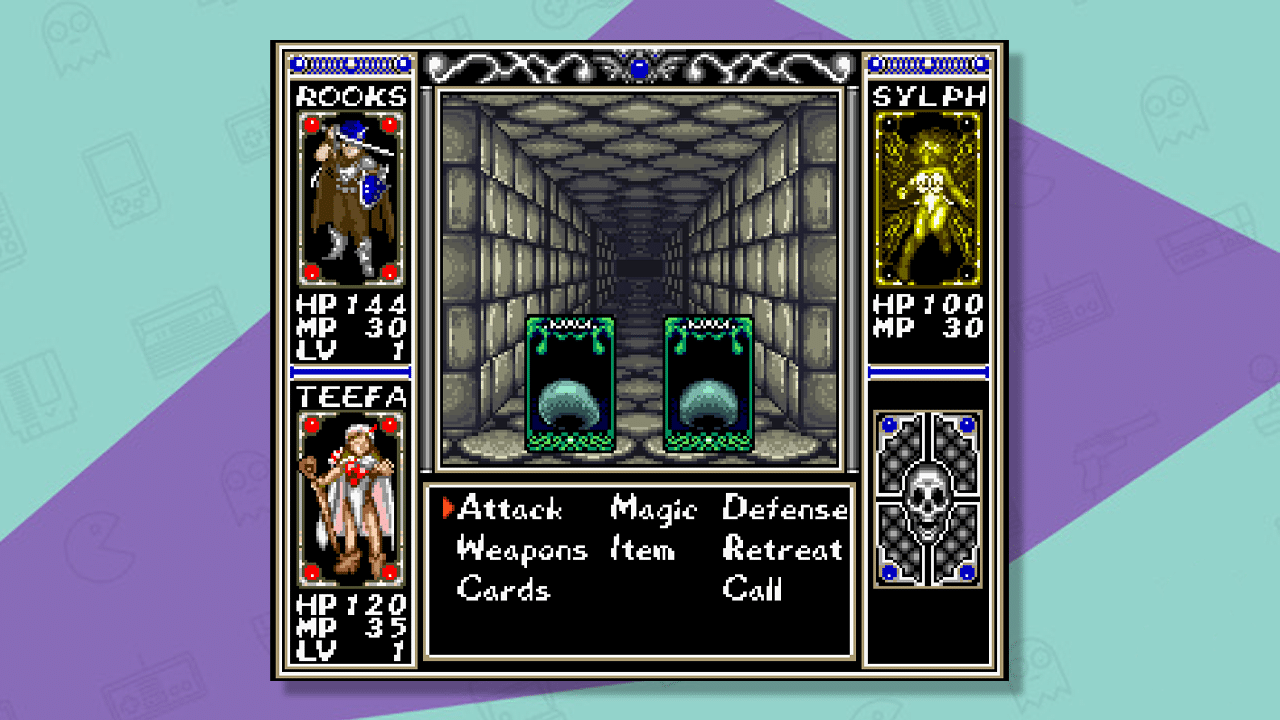
The tough difficulty of the game – which has rare save points and brutal encounters that can result in an untimely demise for one or more of the characters in your party – can be offset these days by using save states, but the original version was incredibly punishing, which meant that its unique approach wasn’t as appreciated as it could have been otherwise.
There’s never really been a game like Arcana – before or since – and it’s a shame that it isn’t more widely known or liked. With a few minor accessibility tweaks back in the day, this really could have been much higher up on the list!
24. Bahamut Lagoon (1996)
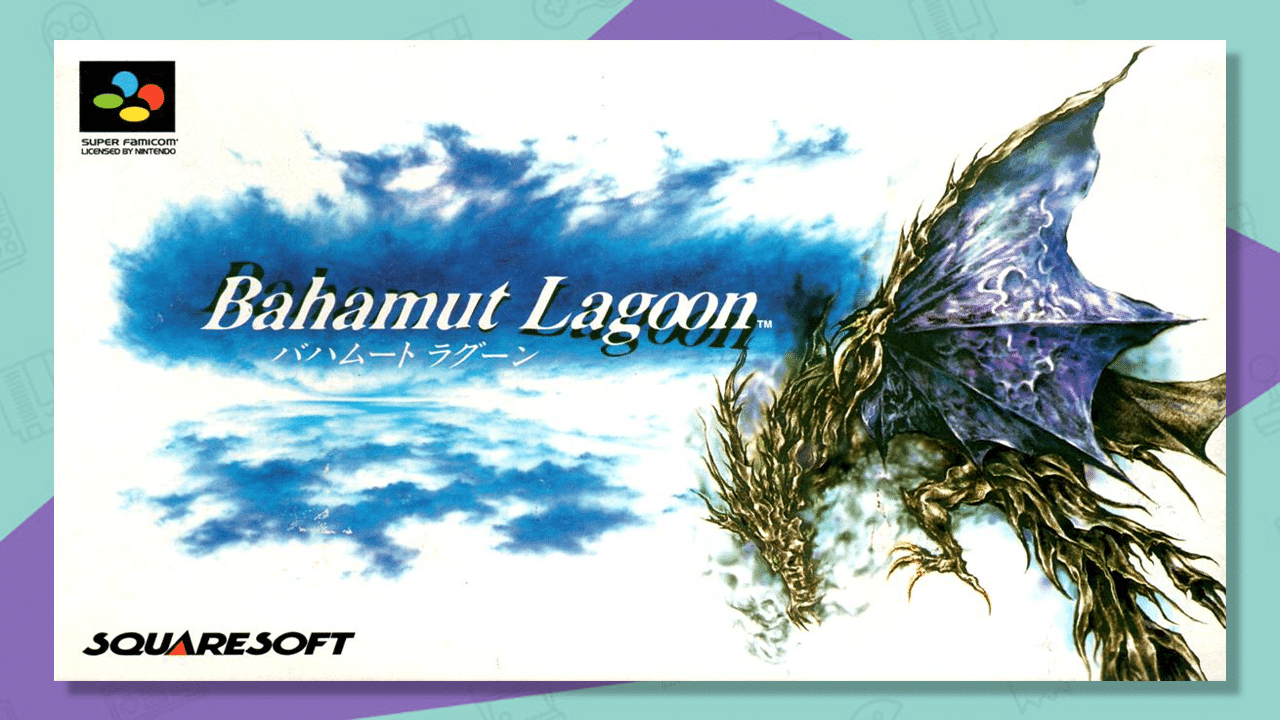
Why do Evil Emperors always want to cause havoc? Why can’t they just sit back and leave things alone?
This is a tale of murder, kidnap, pillaging, invasion, and dragons.
That’s right, dragons, and the most powerful of them all, Bahamut, might be about to be awaken.
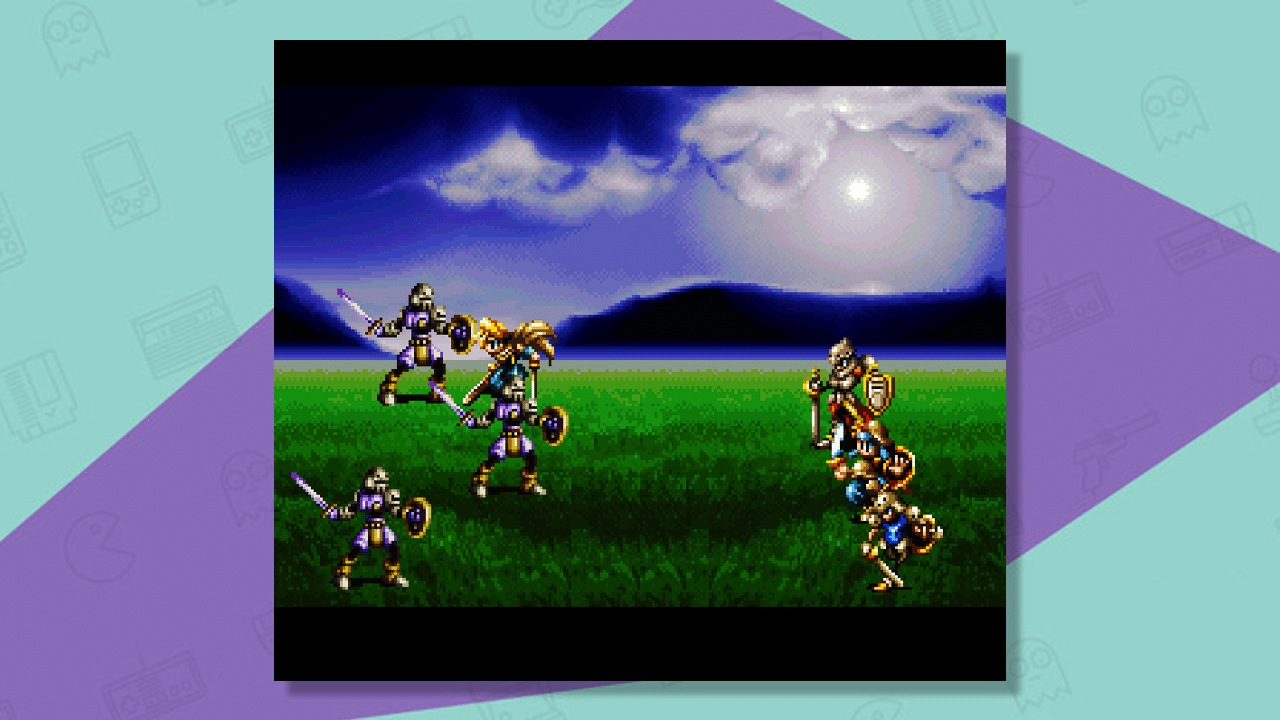
This game is for the tactical minded of you, and beware all ye who enter who aren’t prepared. If you’ve not been exercising those grey cells, then you’ll soon find yourself in hot water.
And that’s not because of the fire-breathing dragons.
There’s an interesting element to this game where players can make decisions in the environment that affect the wider game. For example, if you choose to block off an area with fire or via another method, then enemies will not be able to get through, thus leaving other paths clear.
See; it’s all about using that noggin of yours!
25. Final Fantasy Mystic Quest (1992)

It might seem a bit sacrilegious to pop a Final Fantasy title at the bottom of our list, but stick with me.
I do love this game, but there are just some better titles out there for the SNES that we at Retro Dodo love way more. Hey, FF has won tonnes of top spots before, so we’re sure it can manage coming bottom for once.
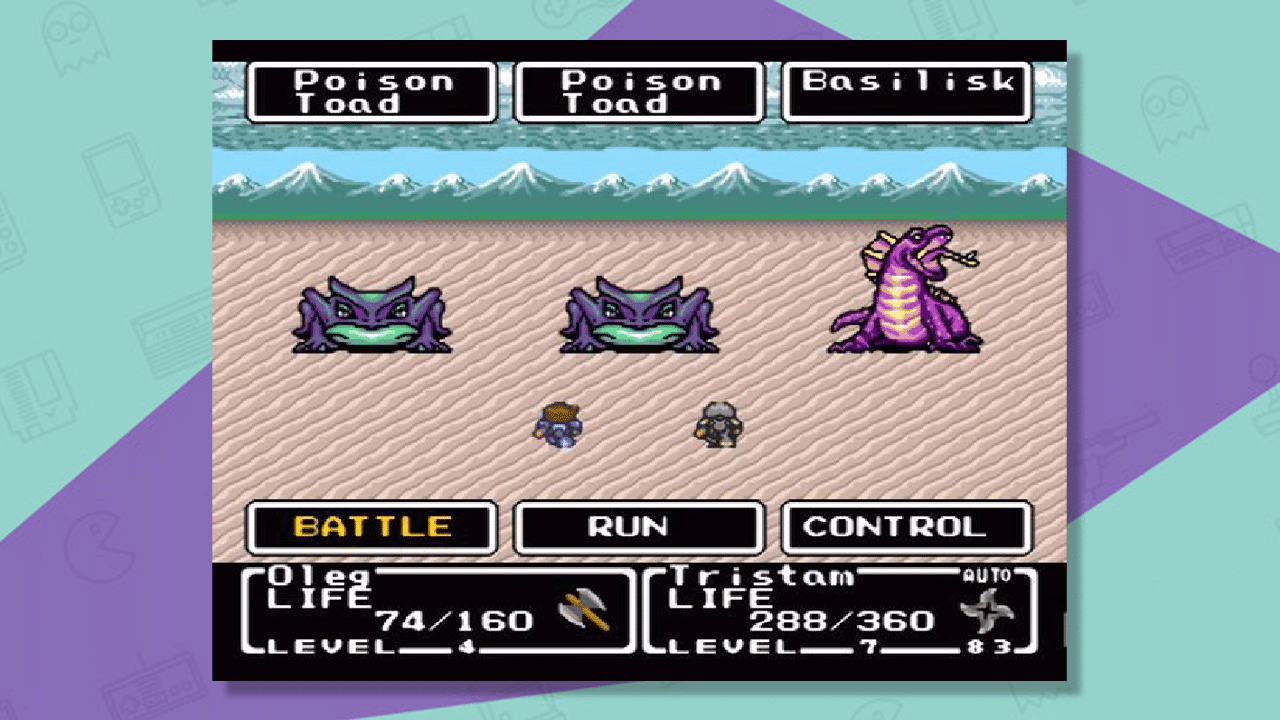
This old-school top-down view exploration game with third-person battles is a classic, we can all agree on that. It’s filled with diving into dungeons, interacting with NPCs, item hoarding.
It’s a bonafide RPG, which is why you’re here, after all!
One thing that I do love about this game is the fact that there are no random battles. It takes a bit of getting used to for anyone that is used to the usual Active Time Battle system used in the other FF Games, but once you get into the flow, it’s all plain sailing from there.


